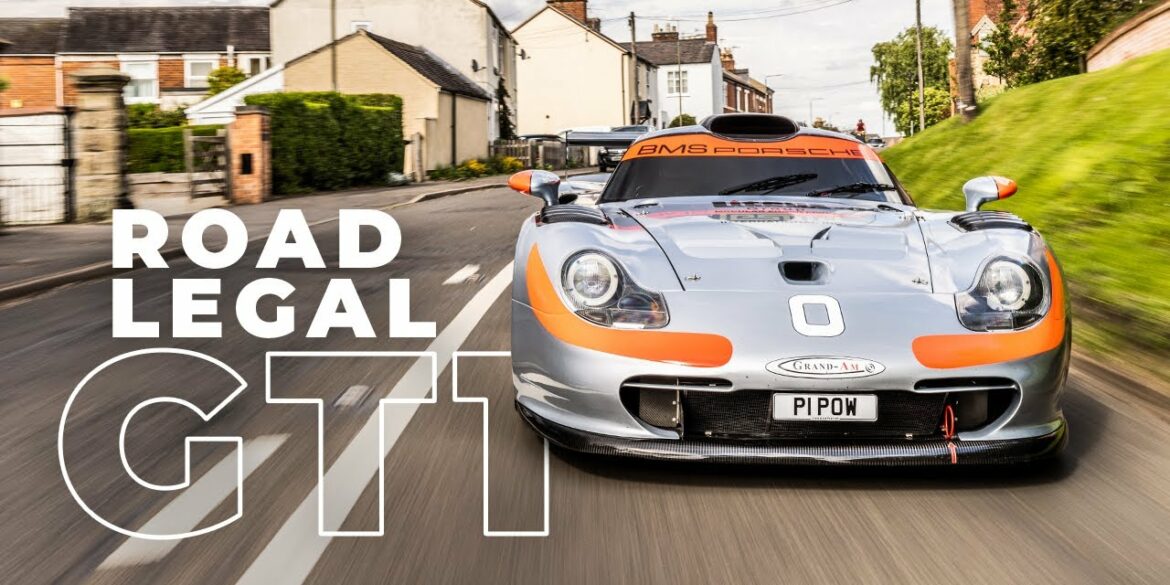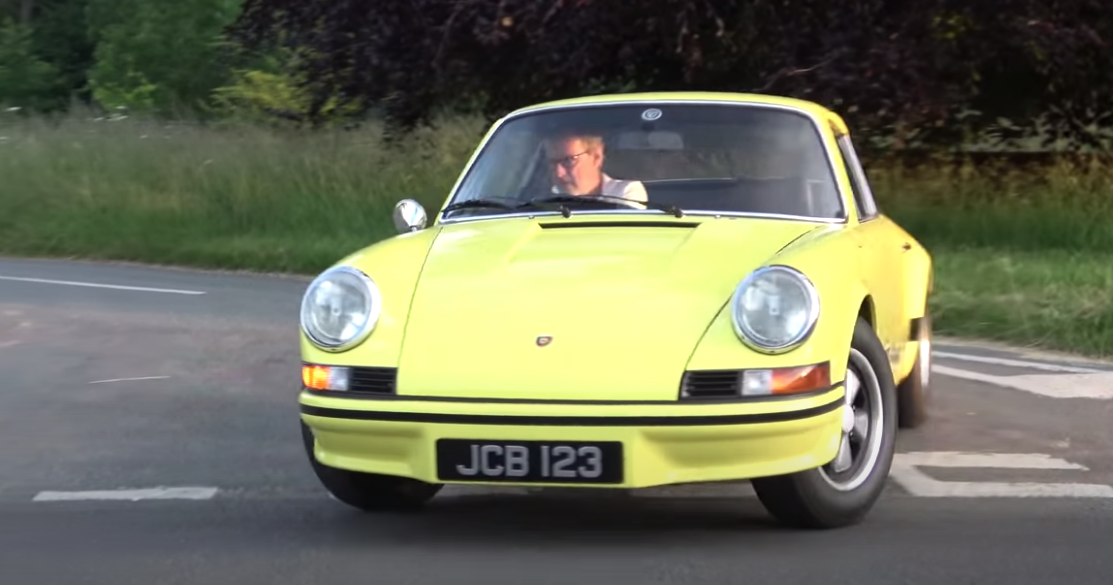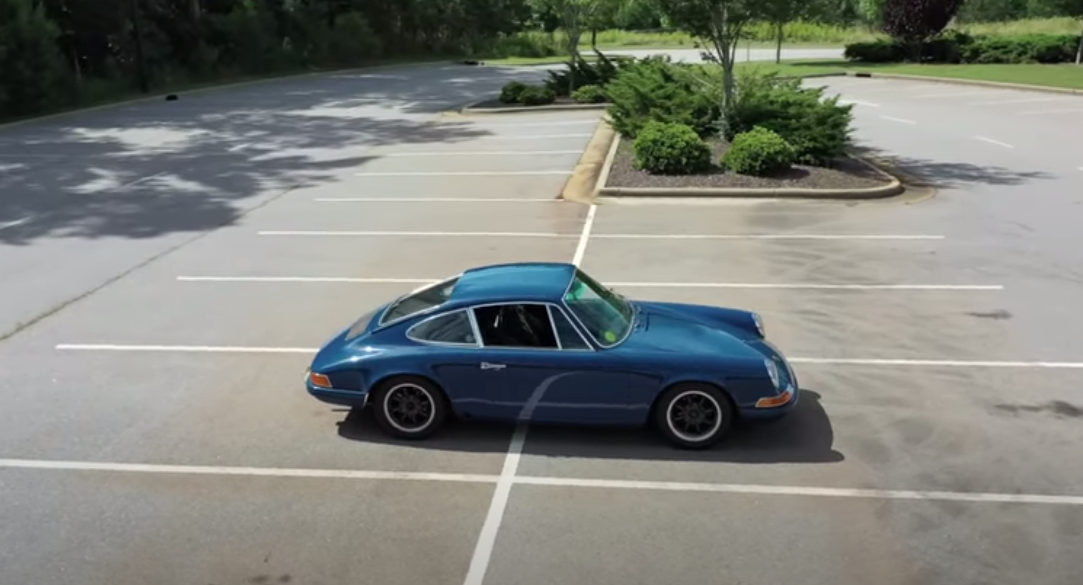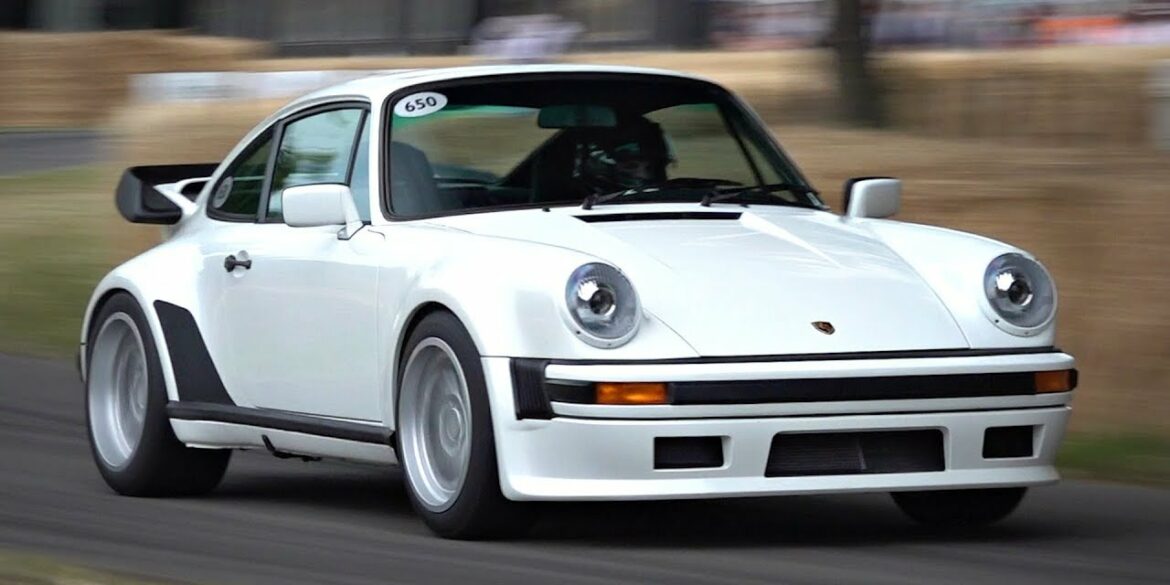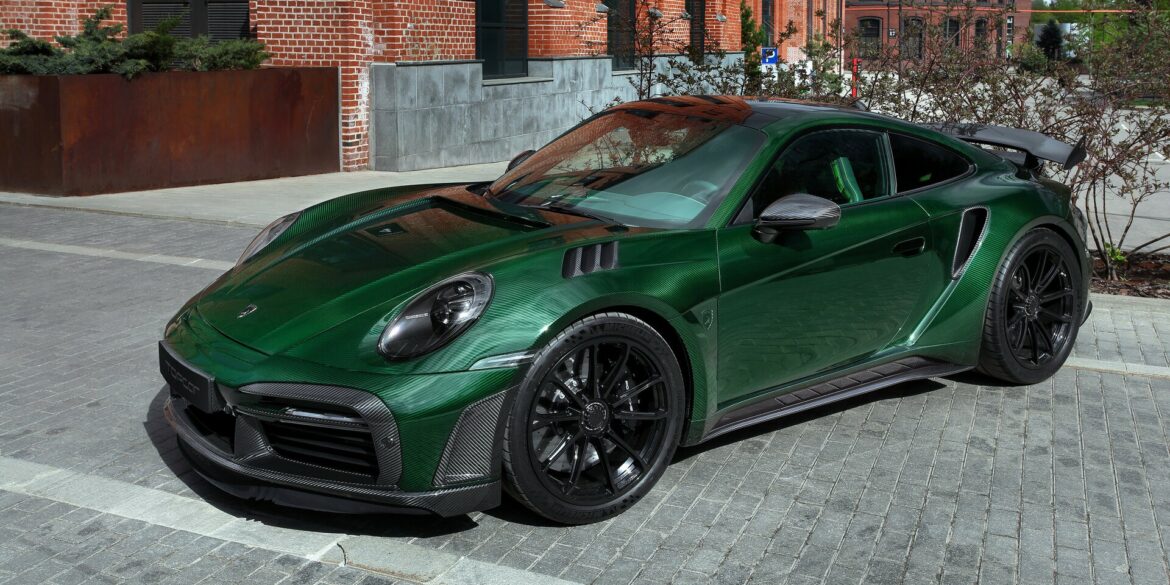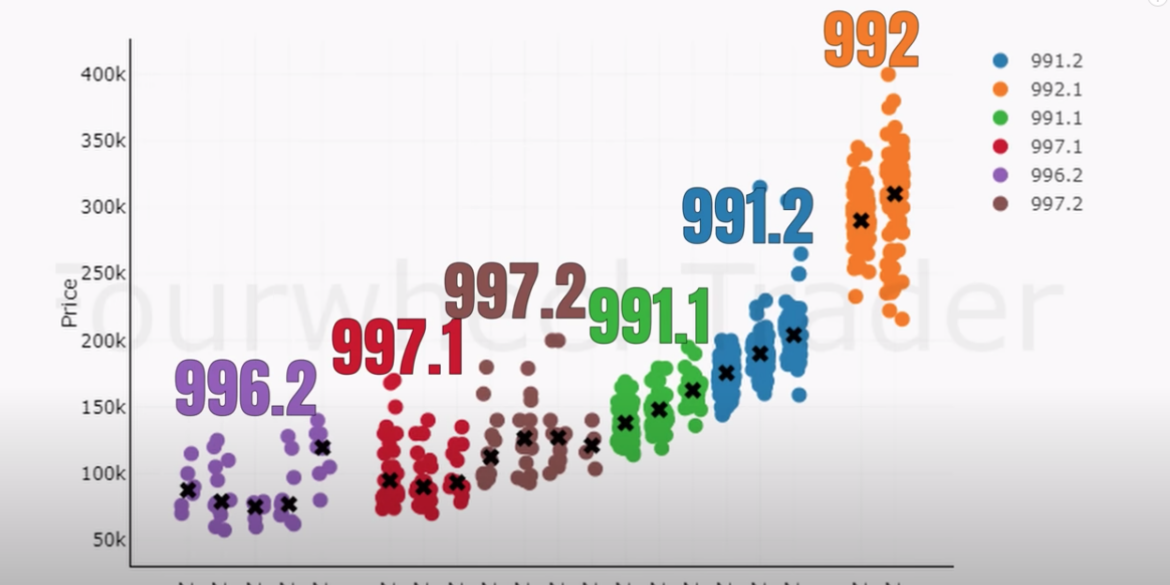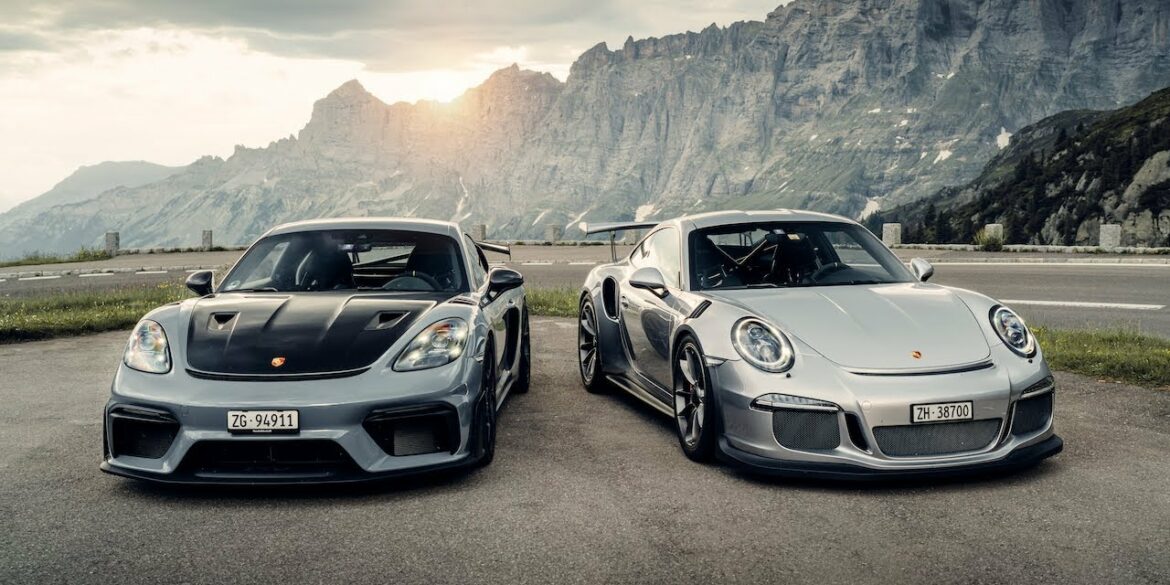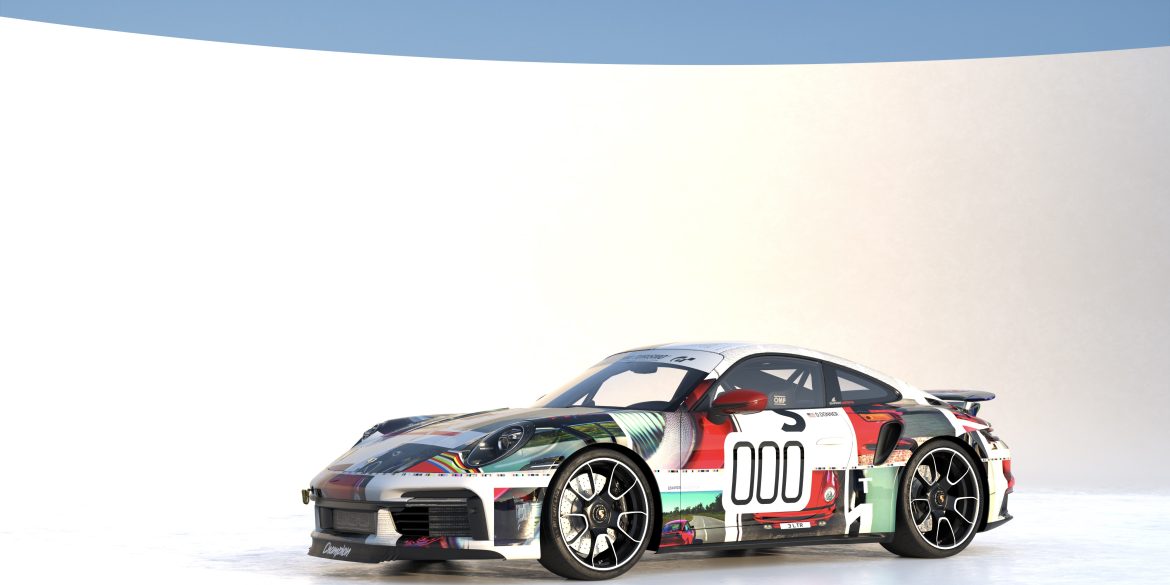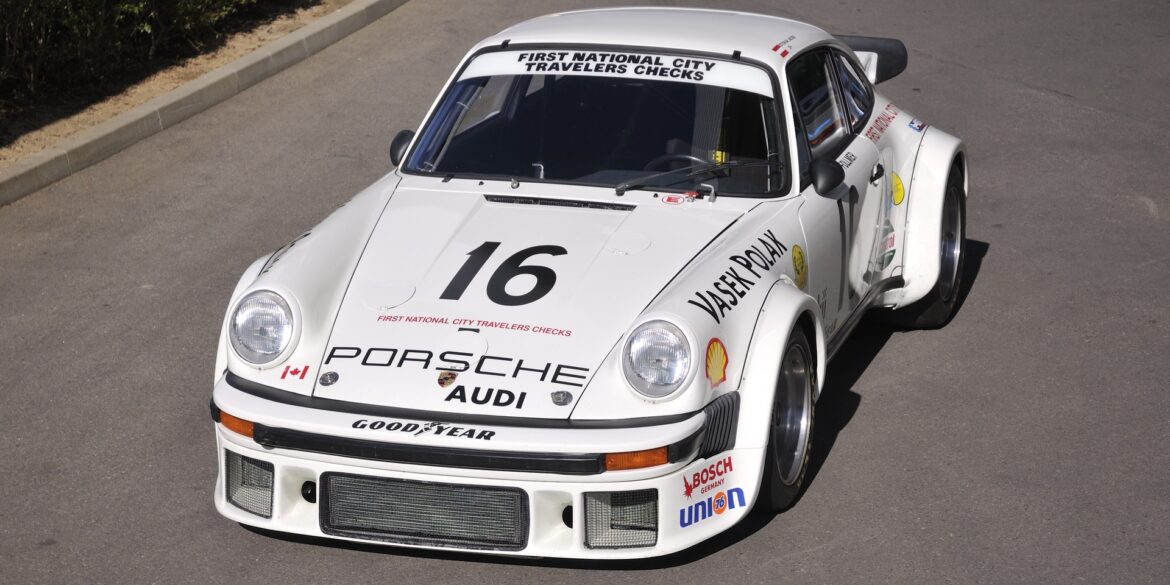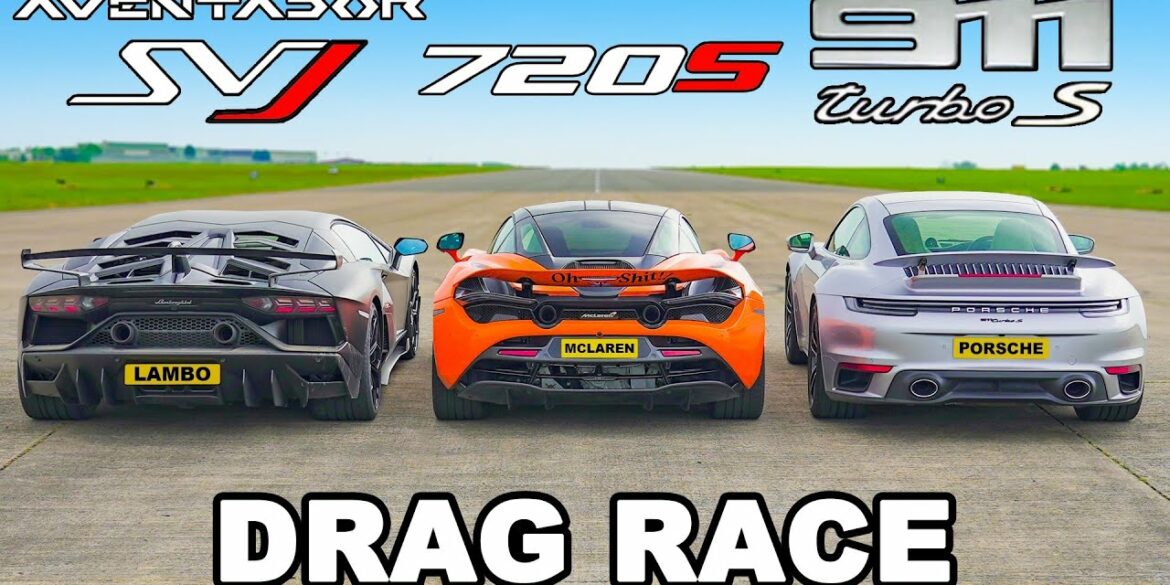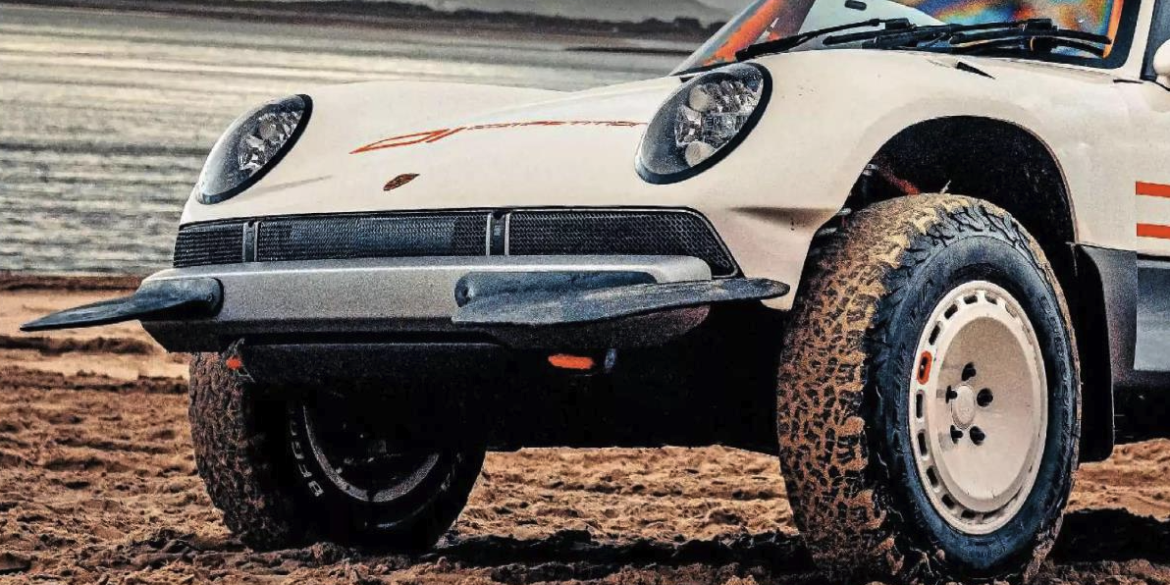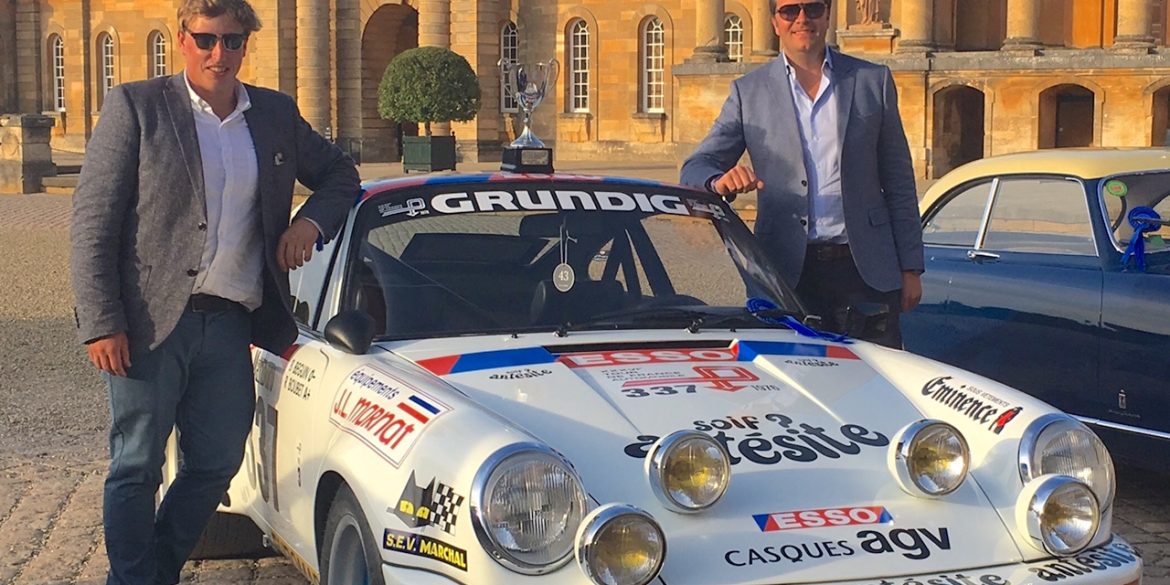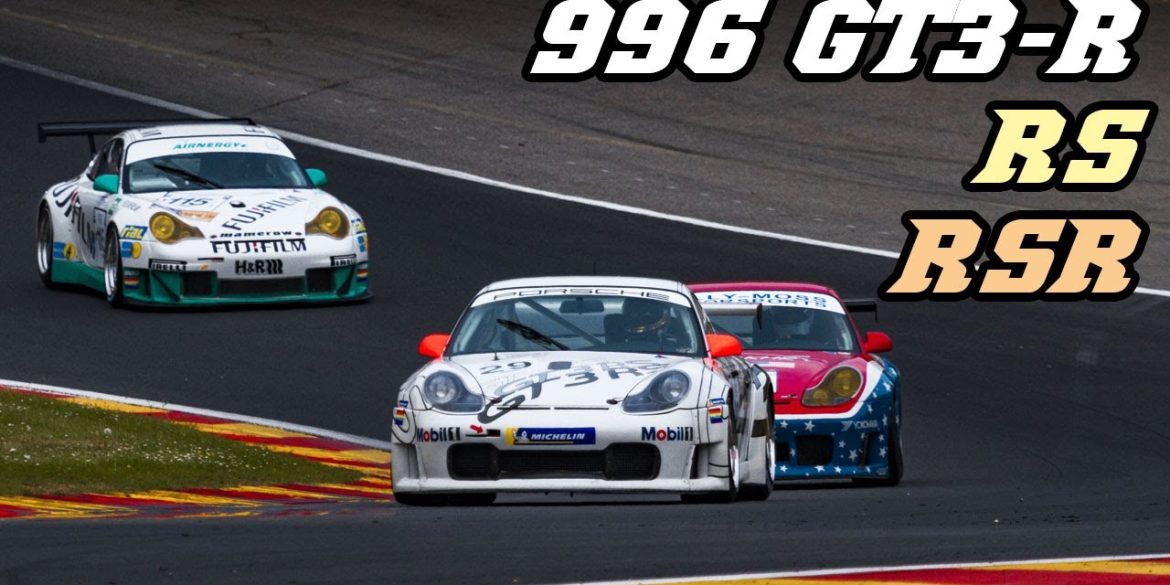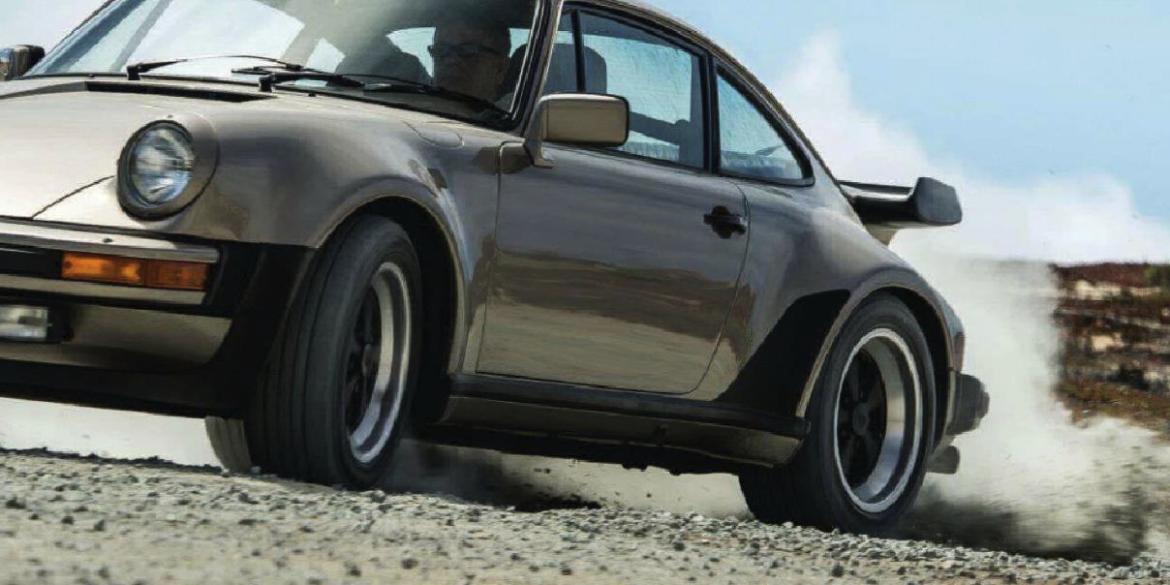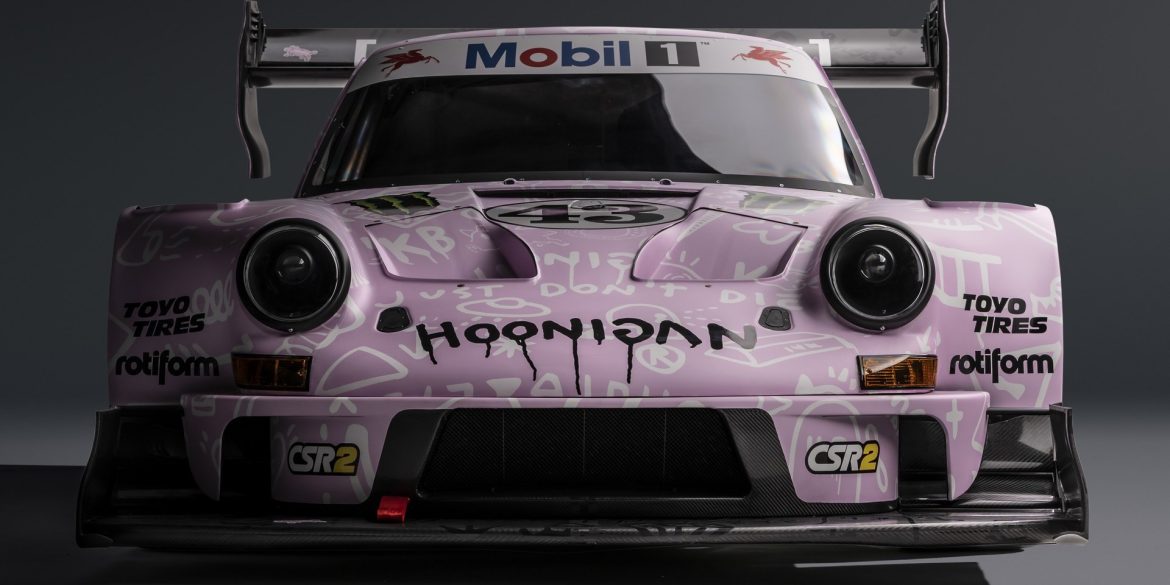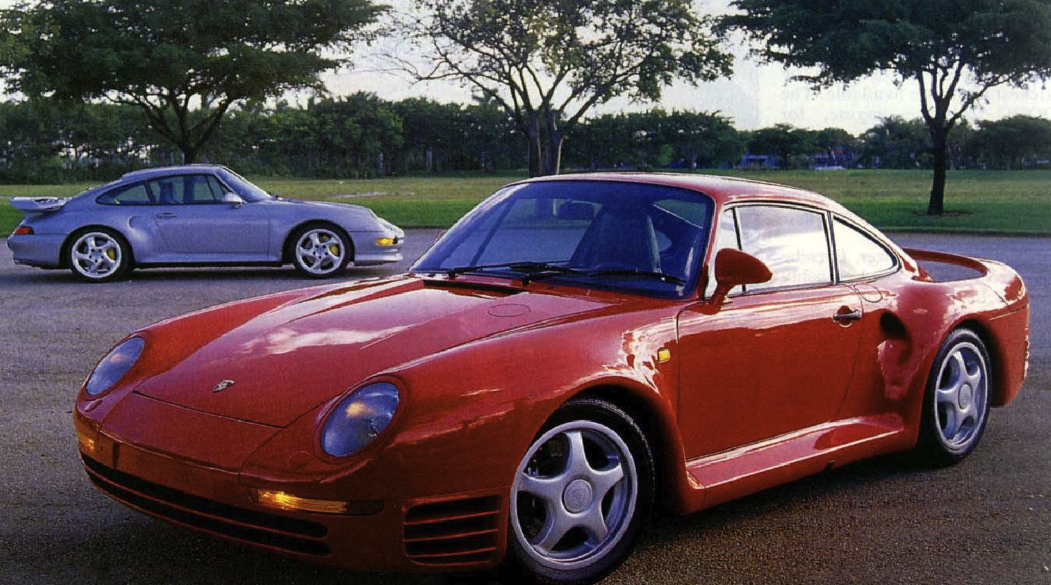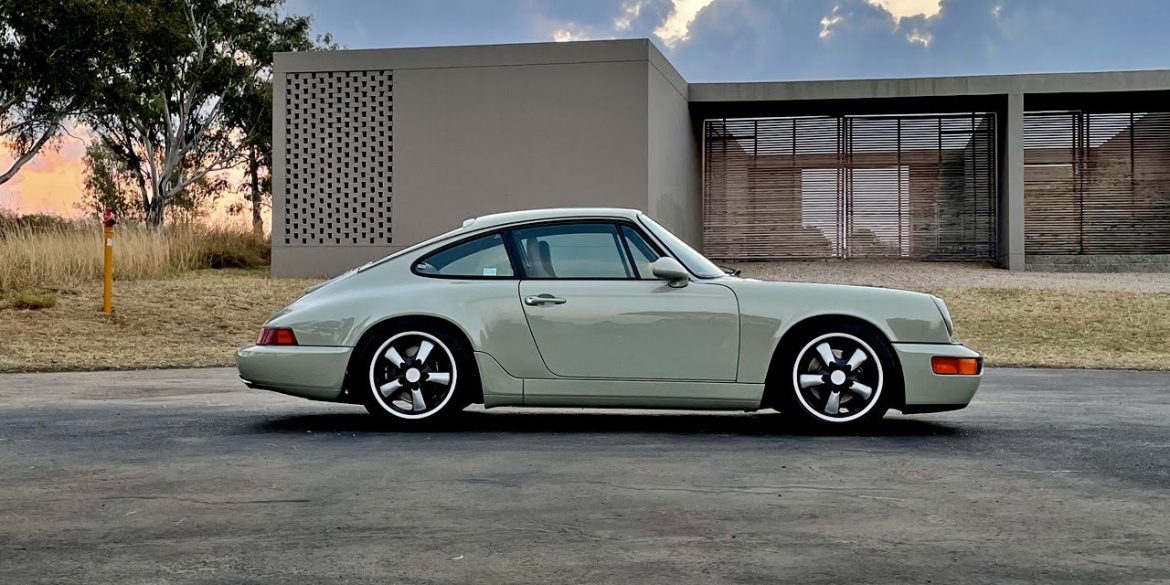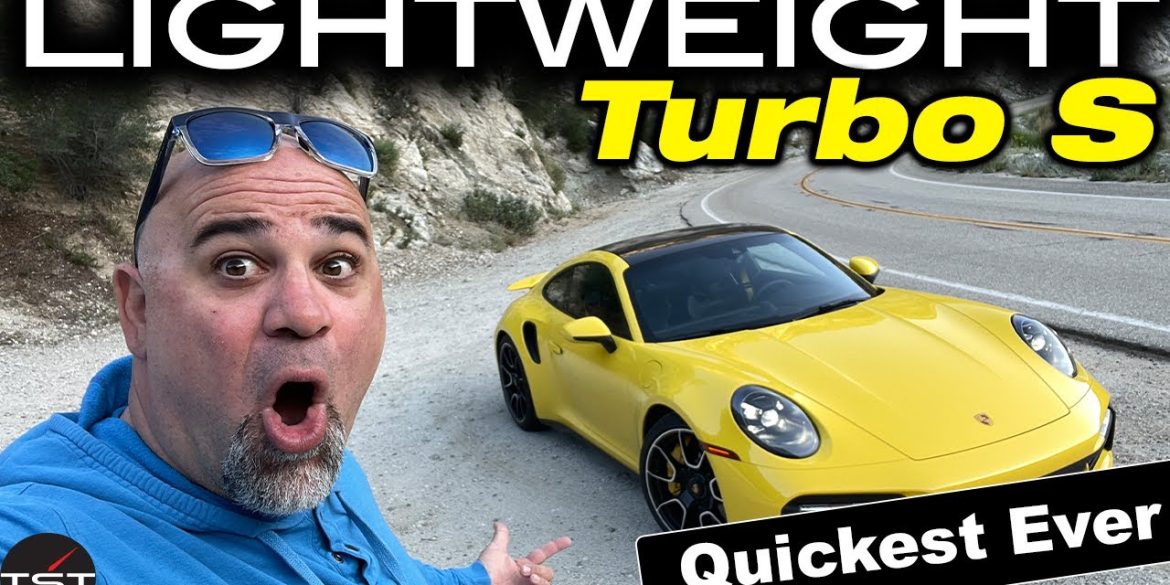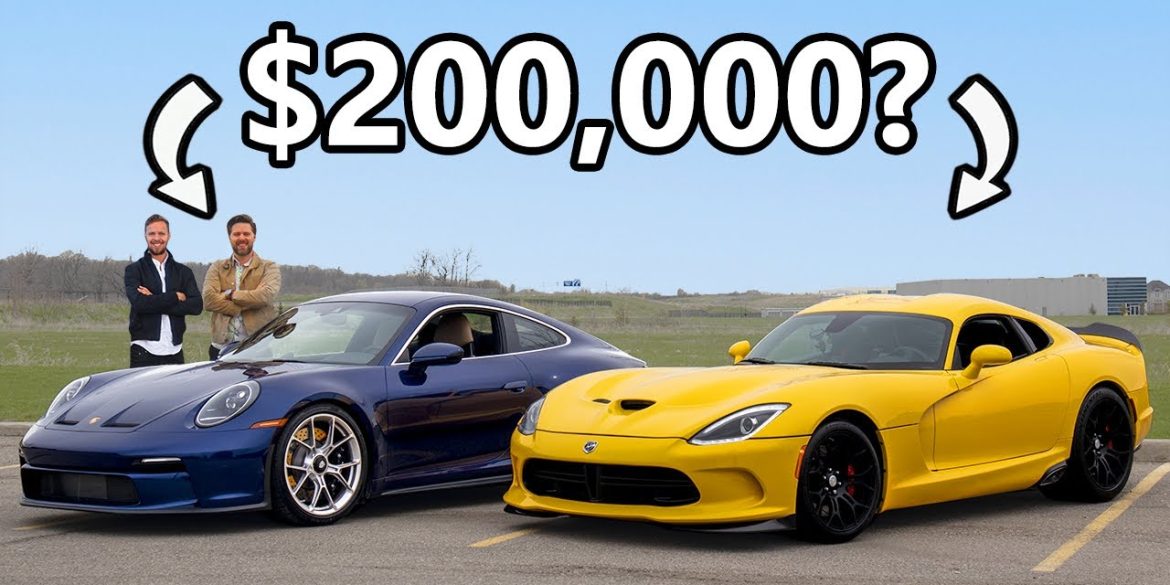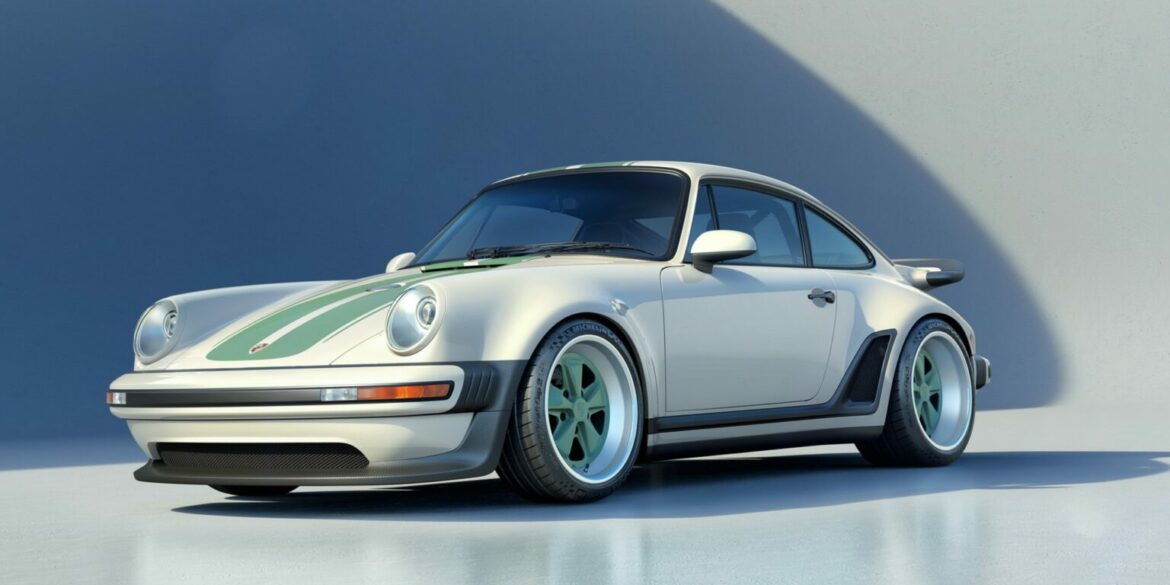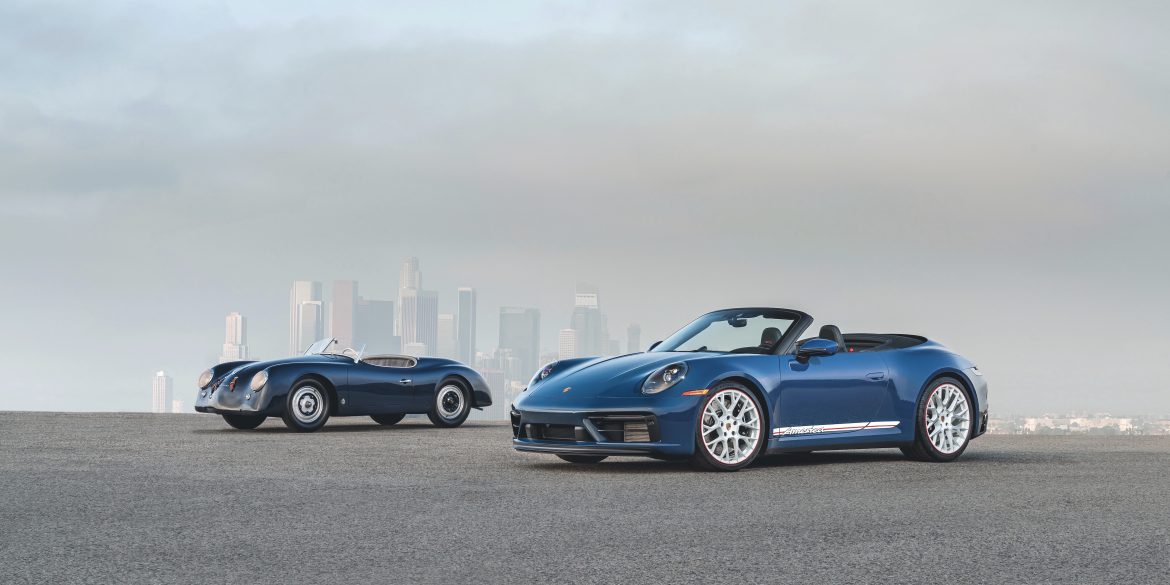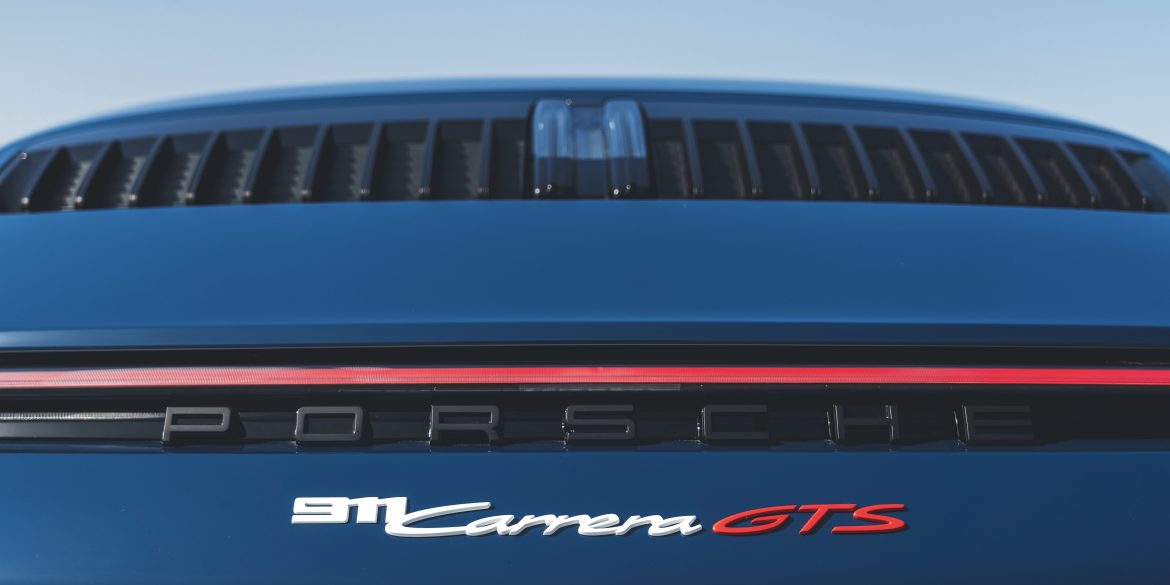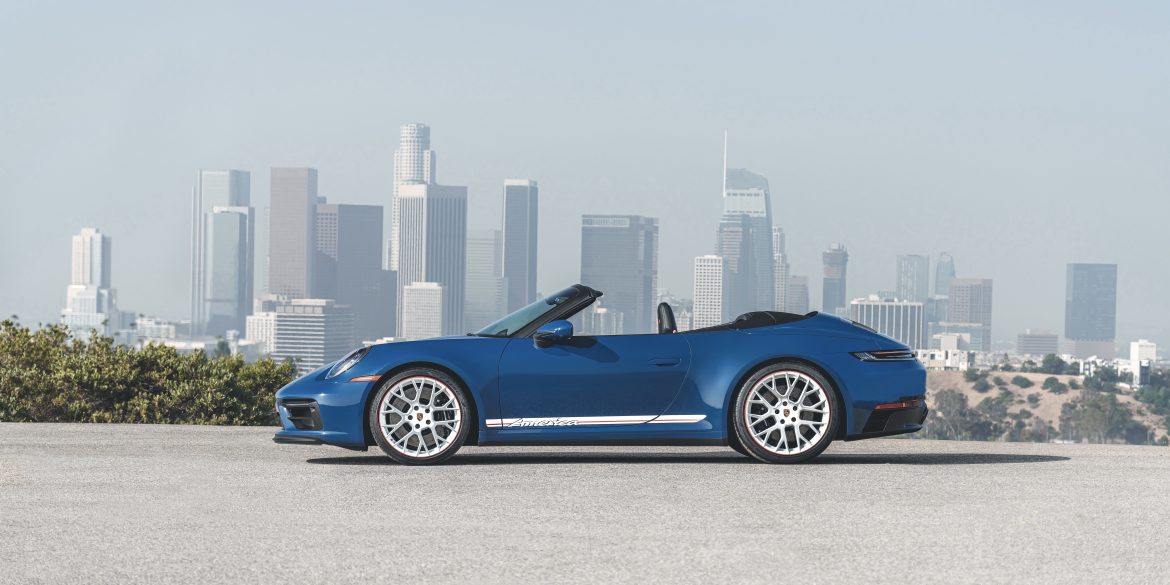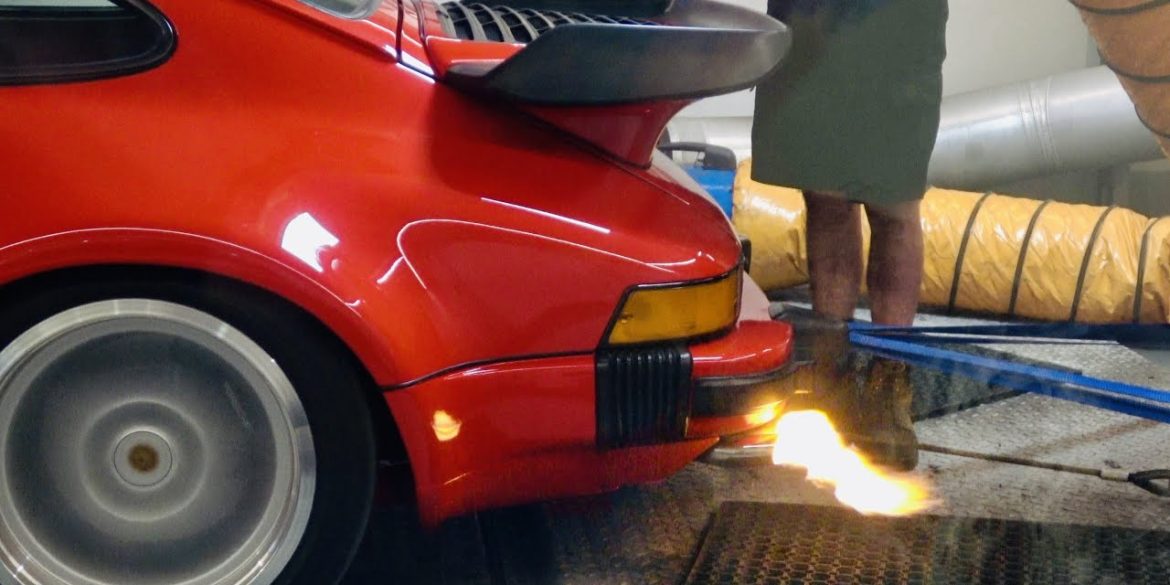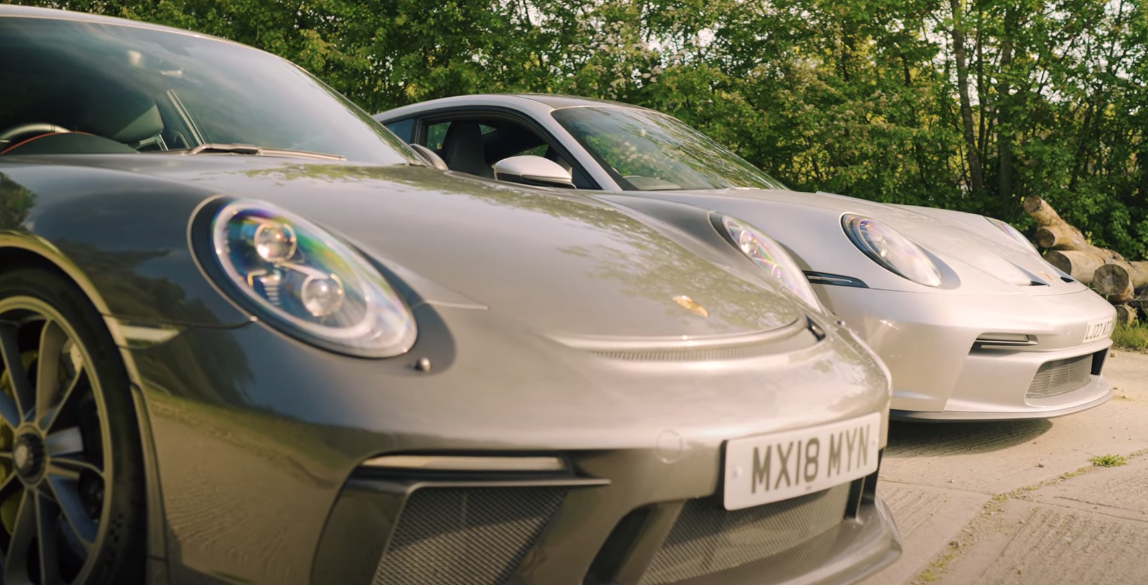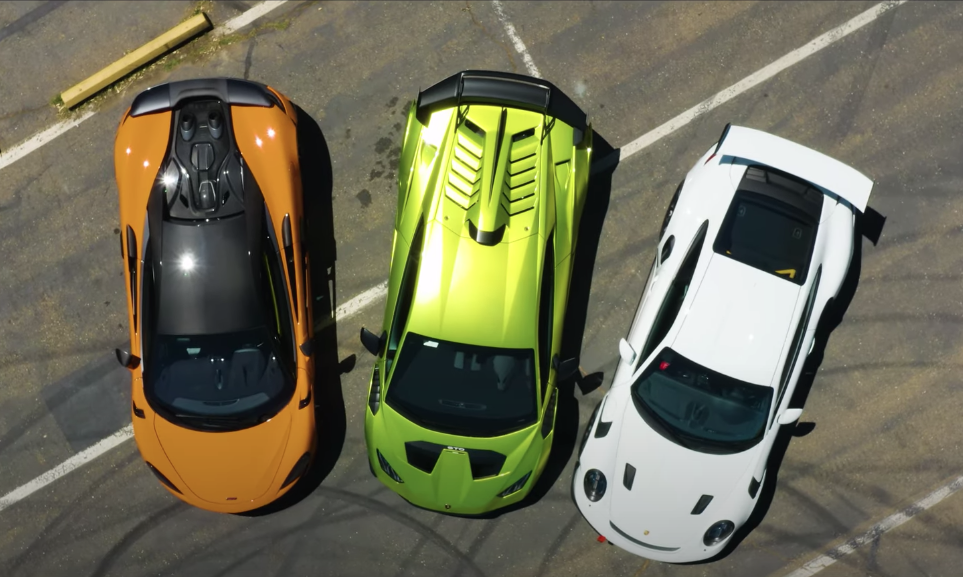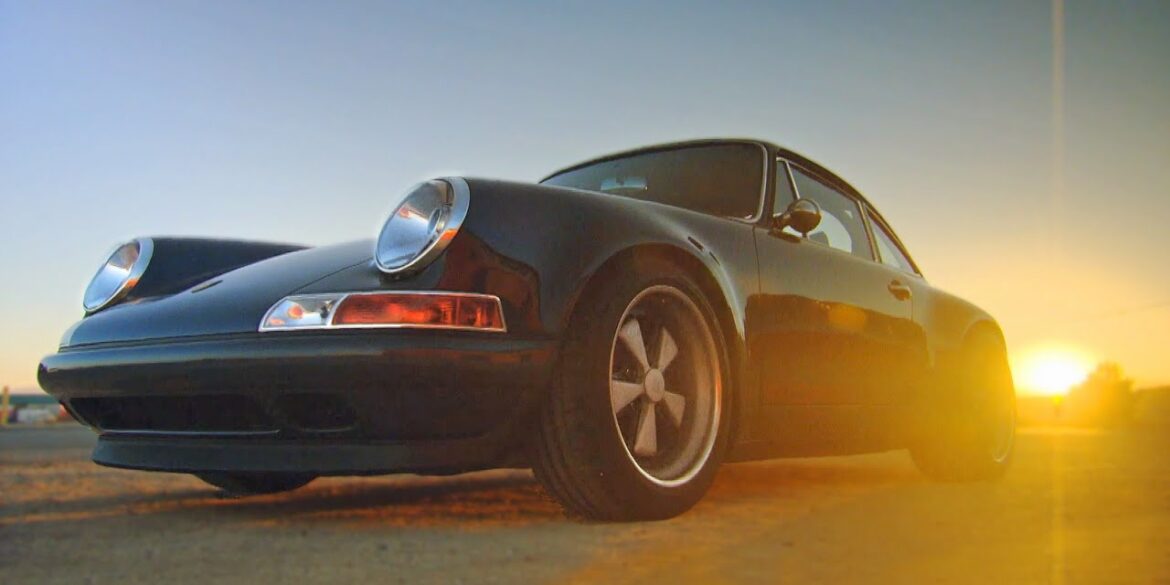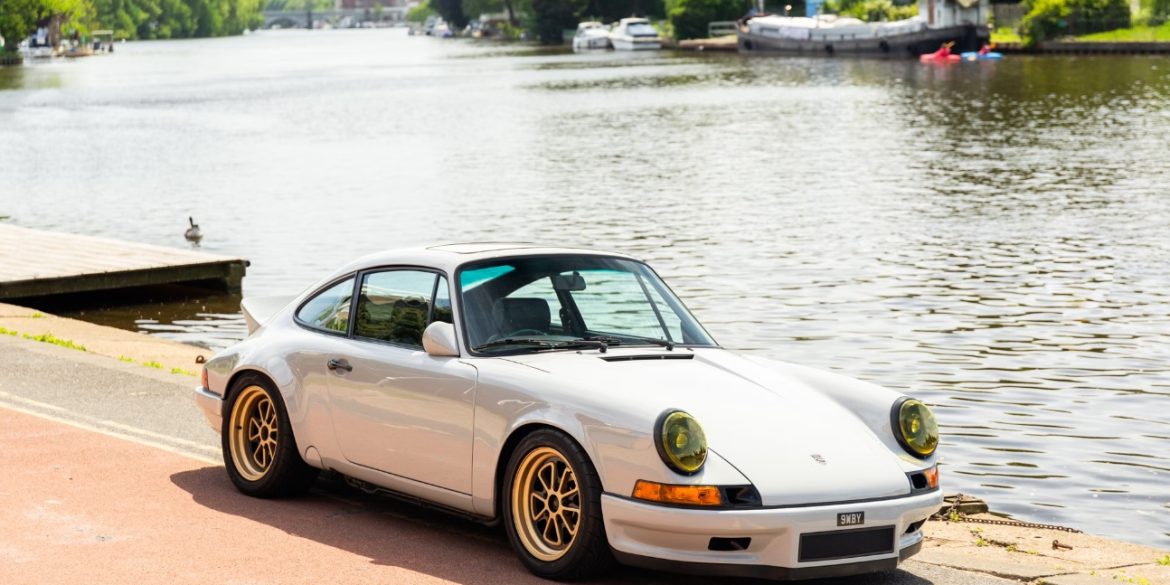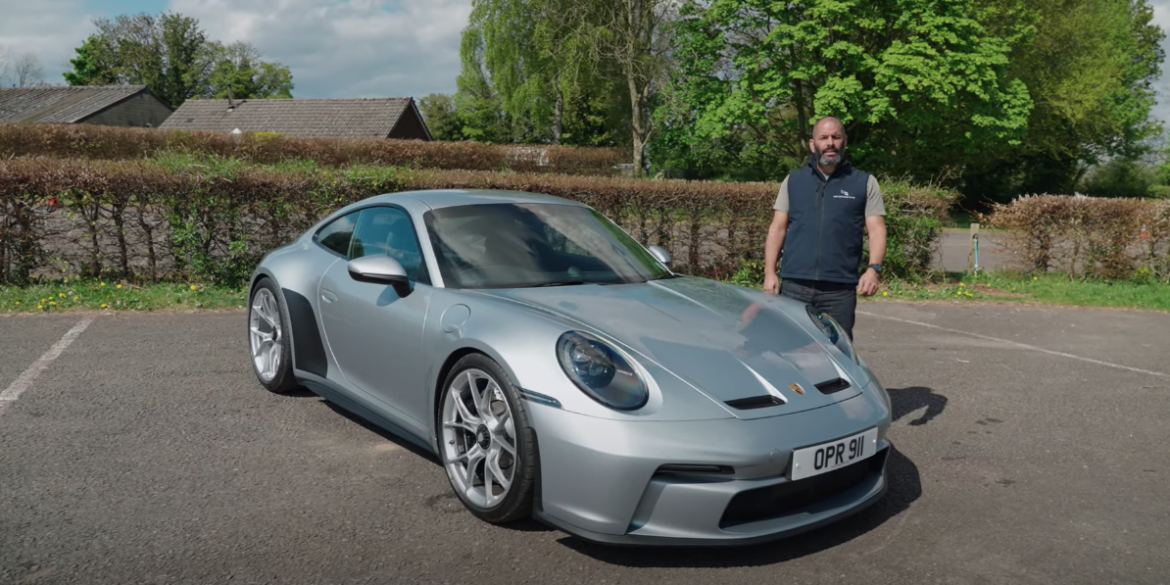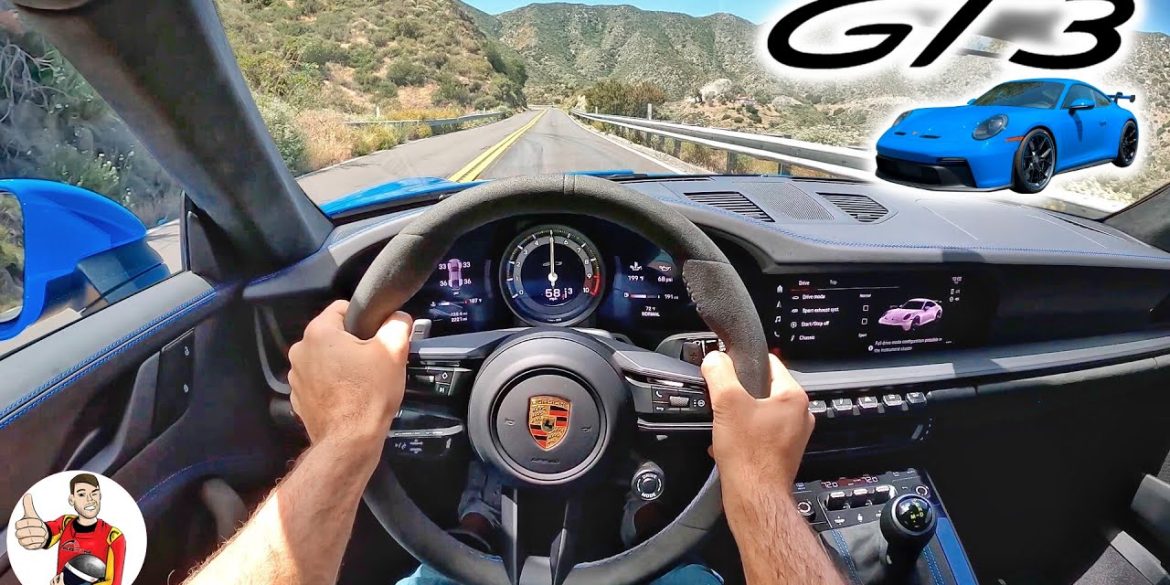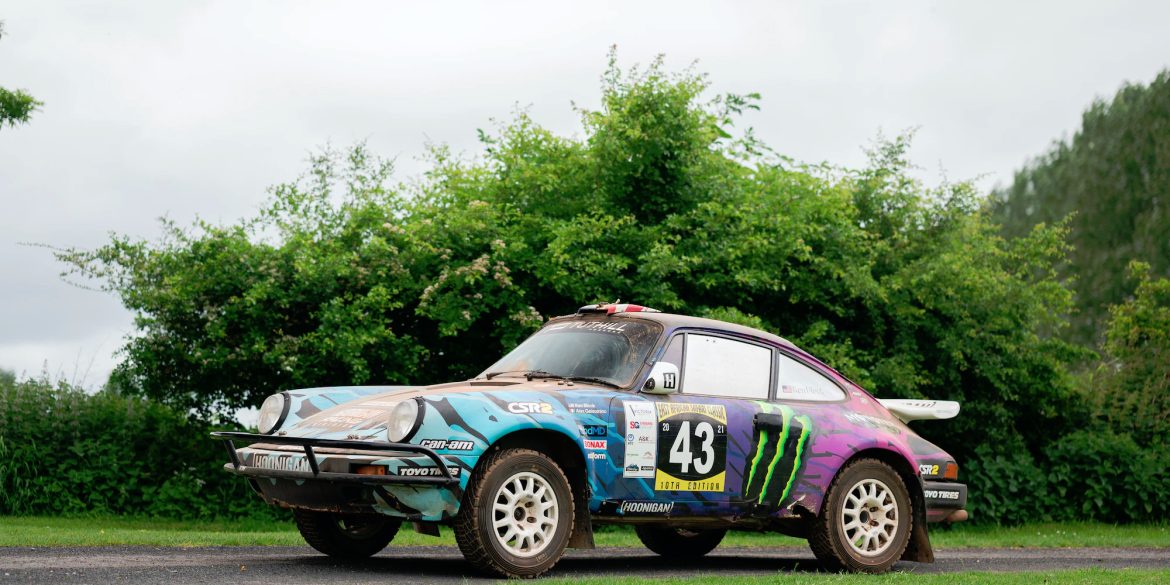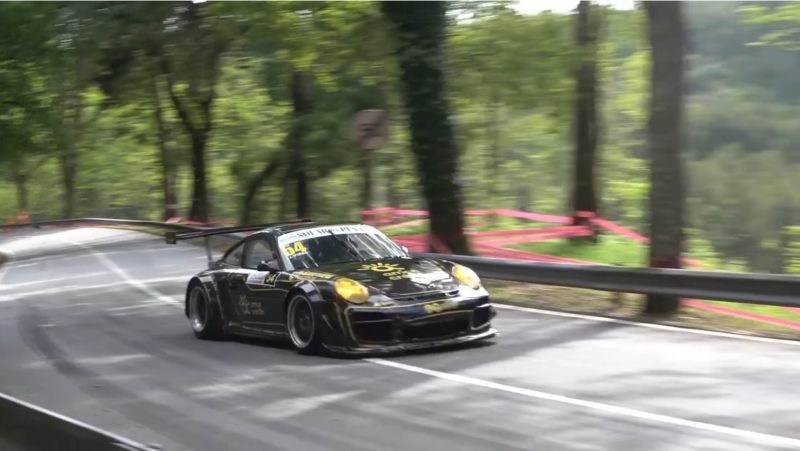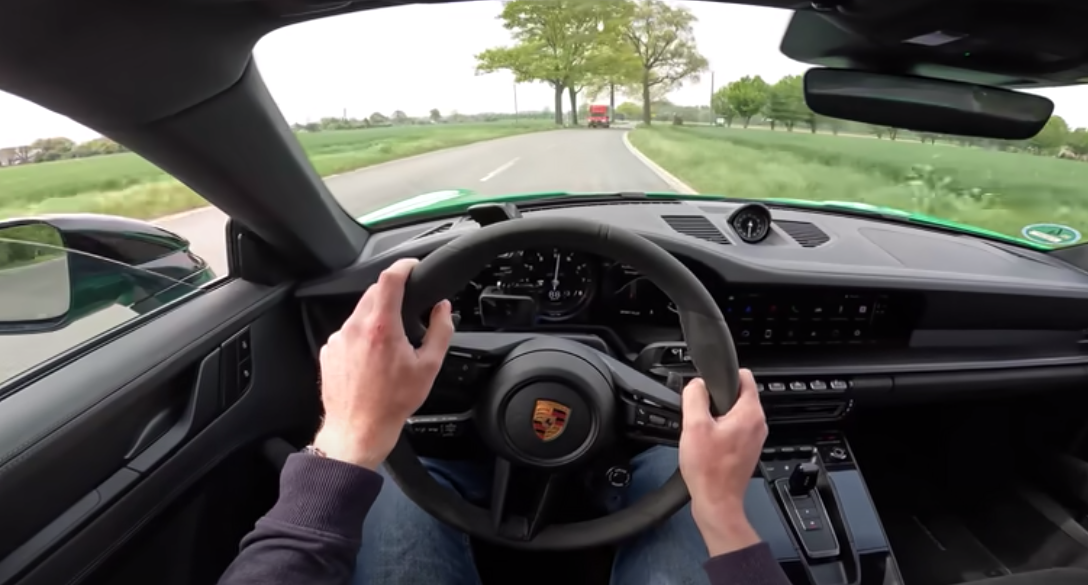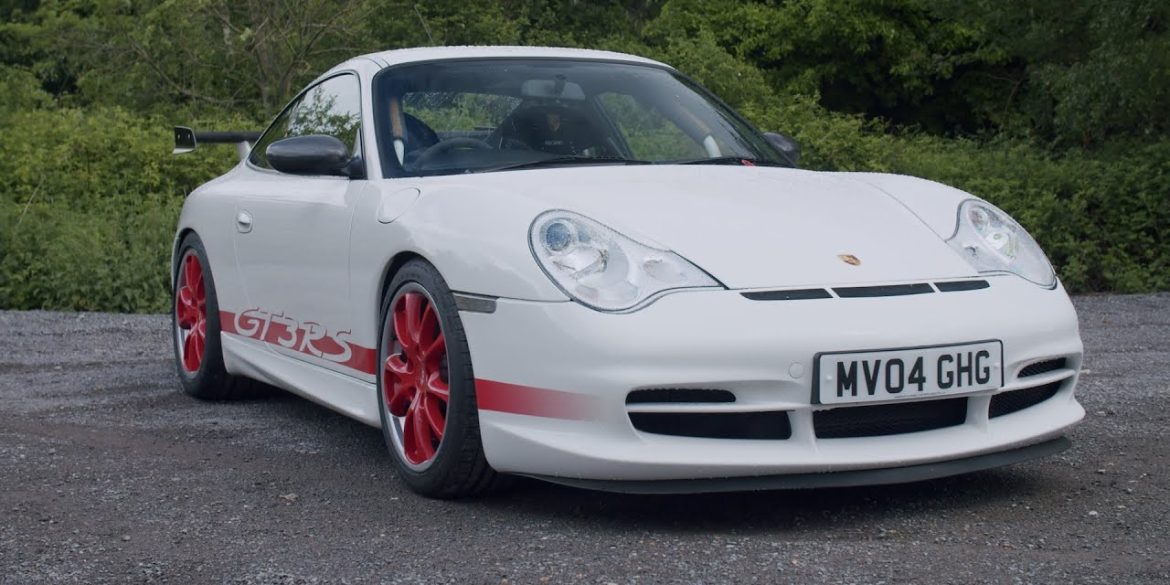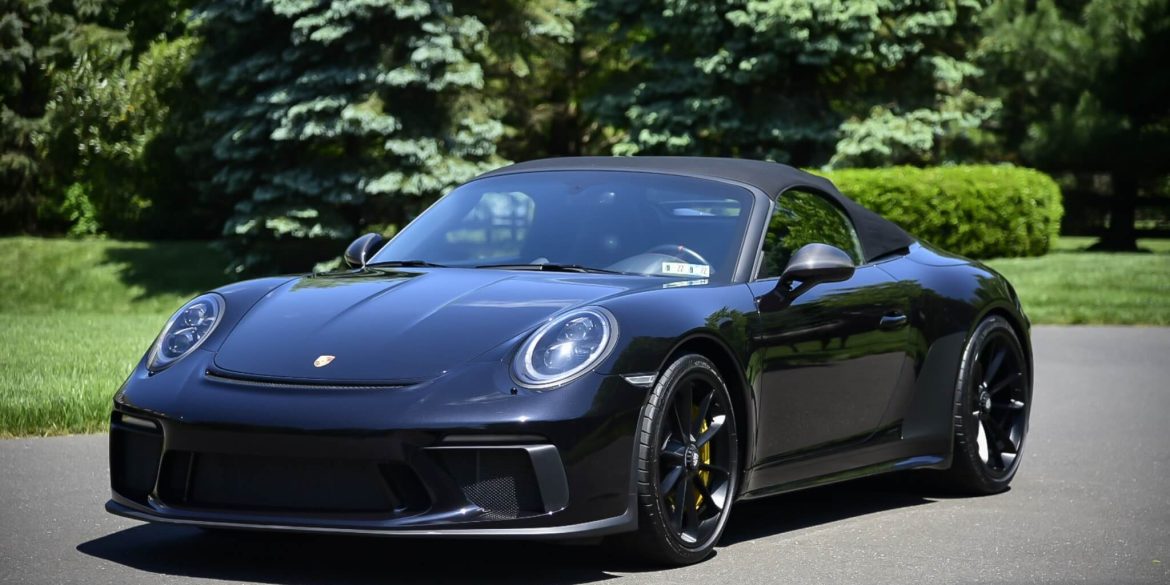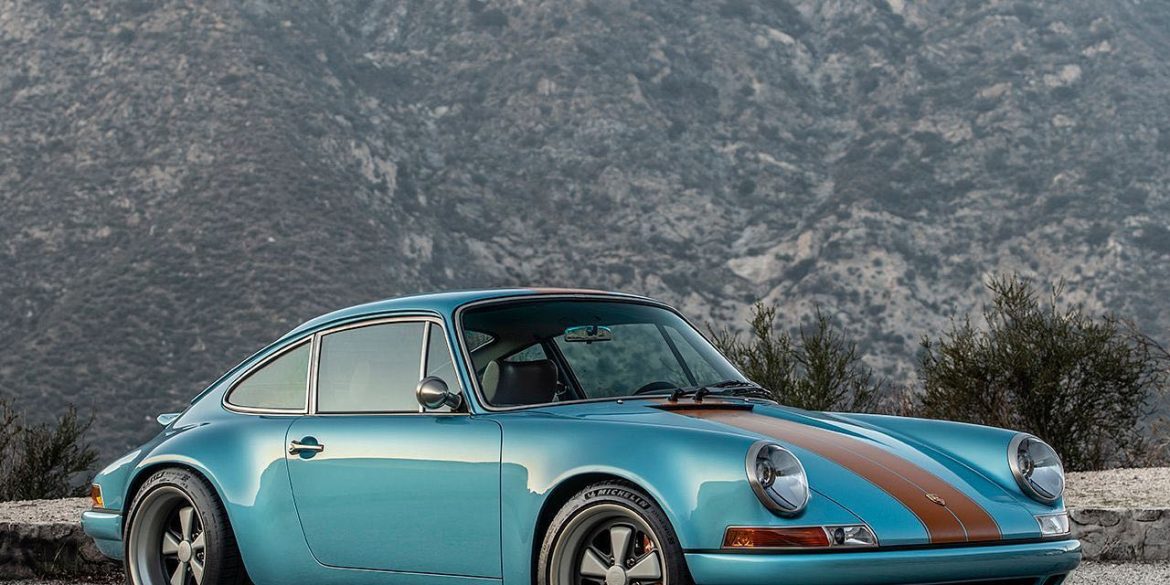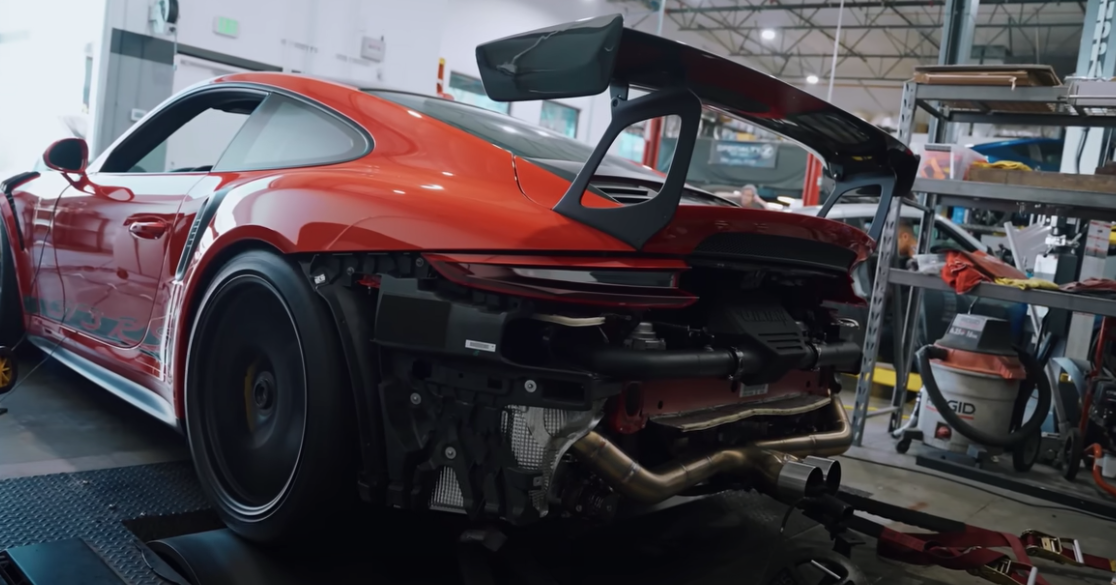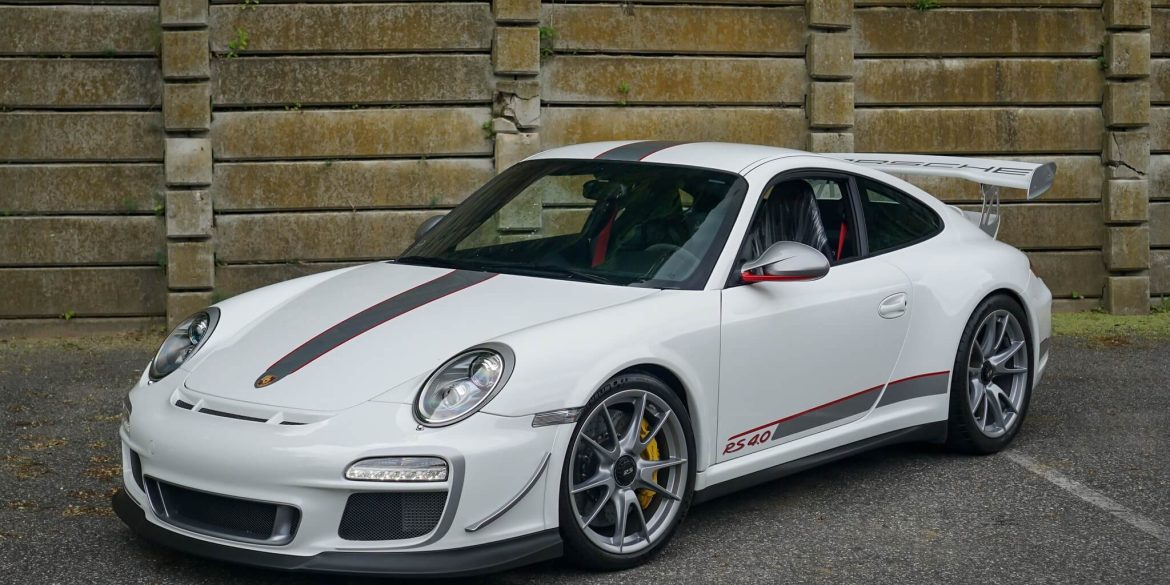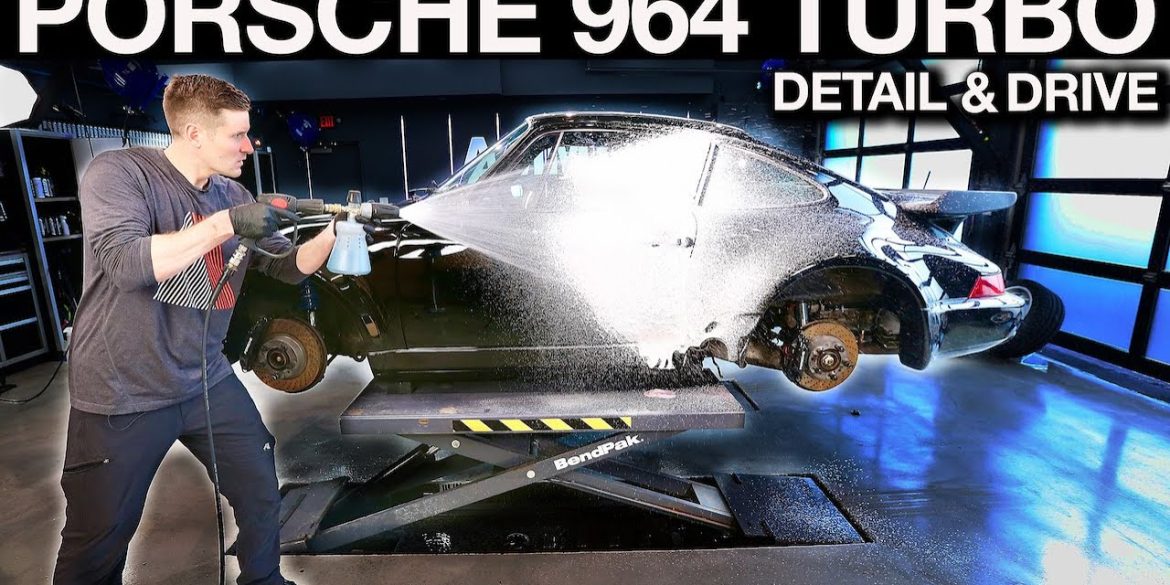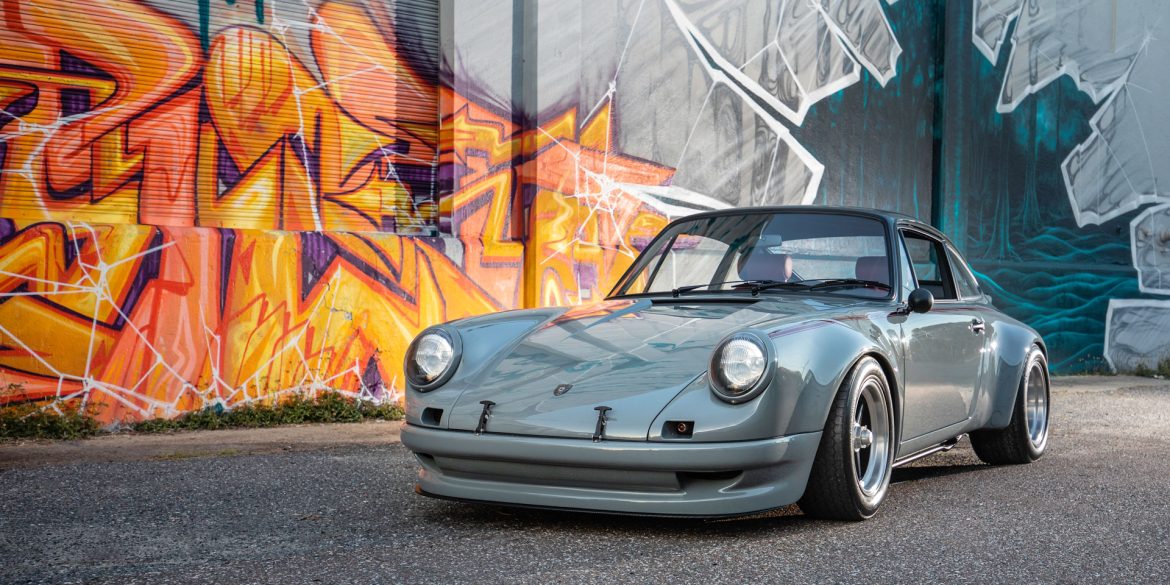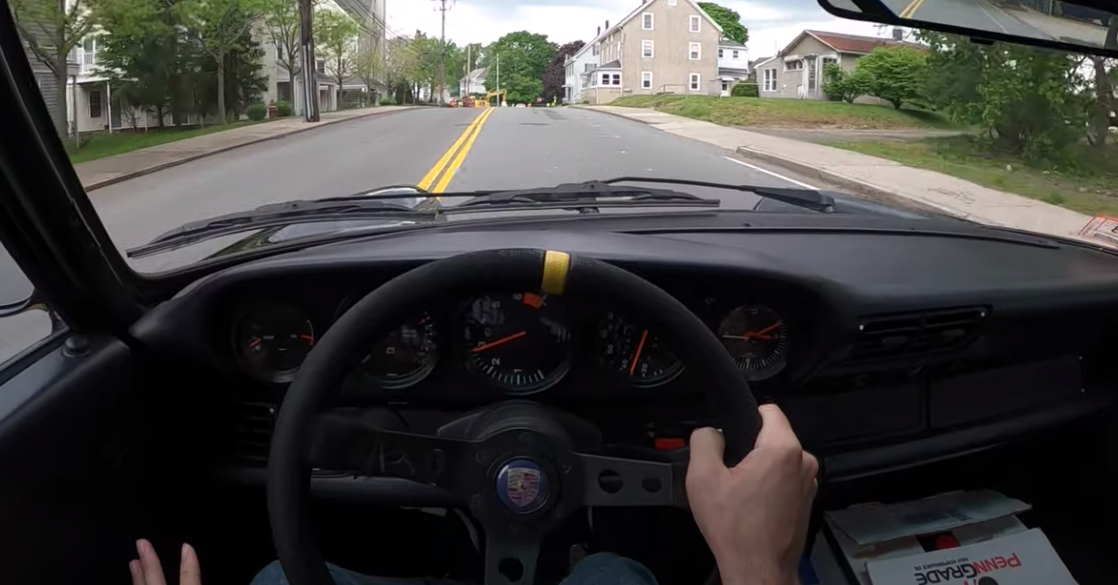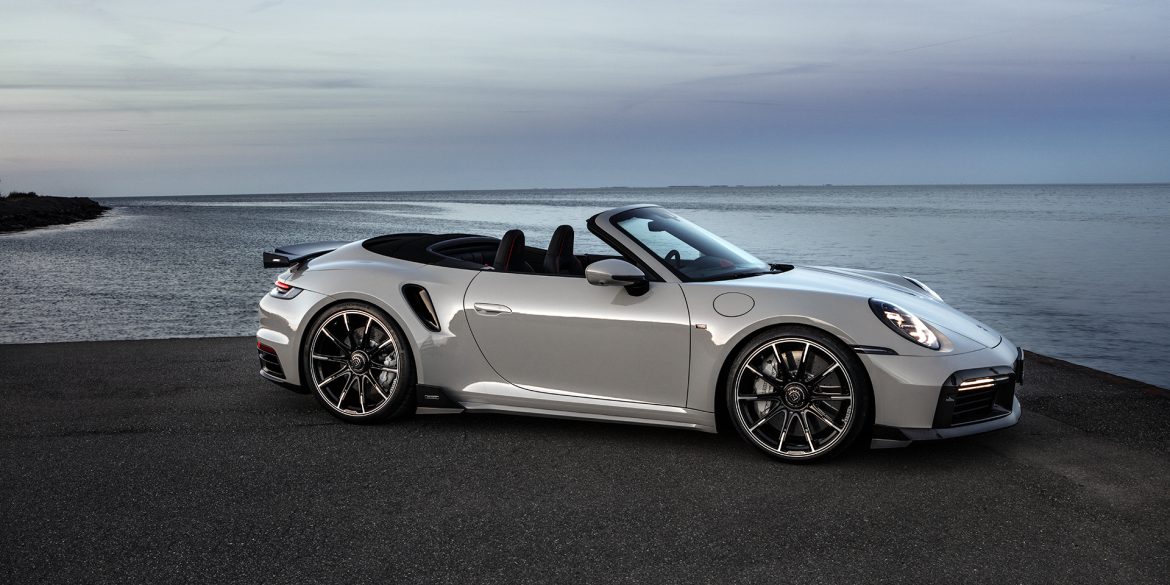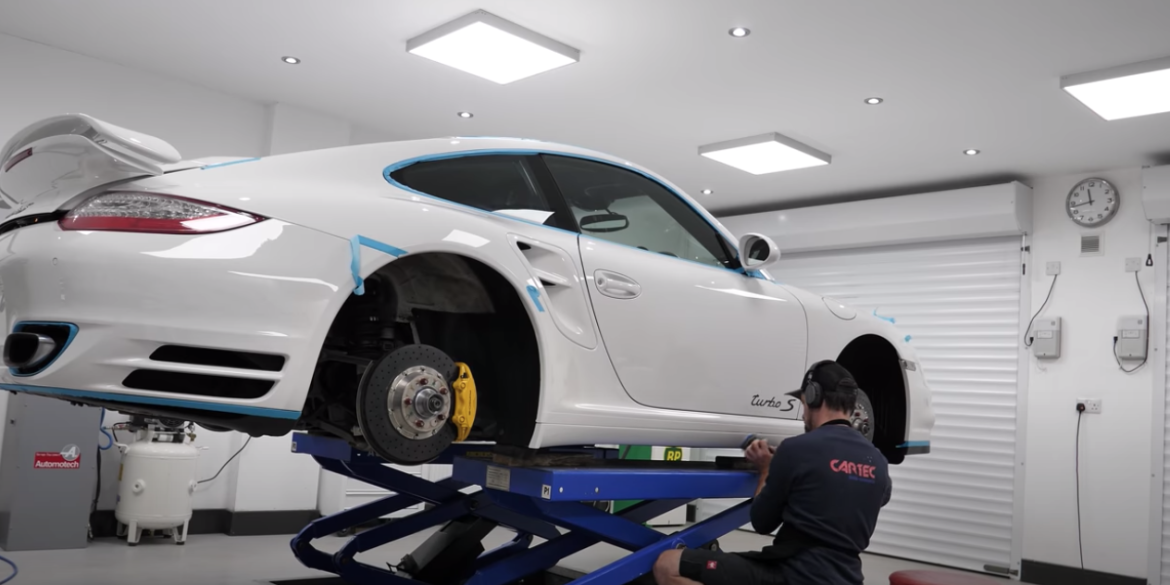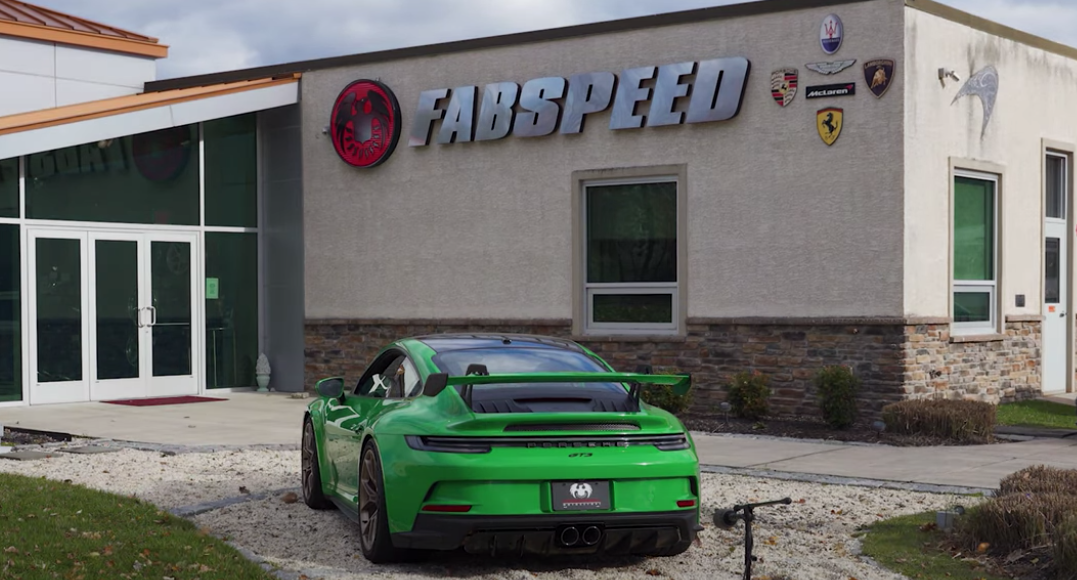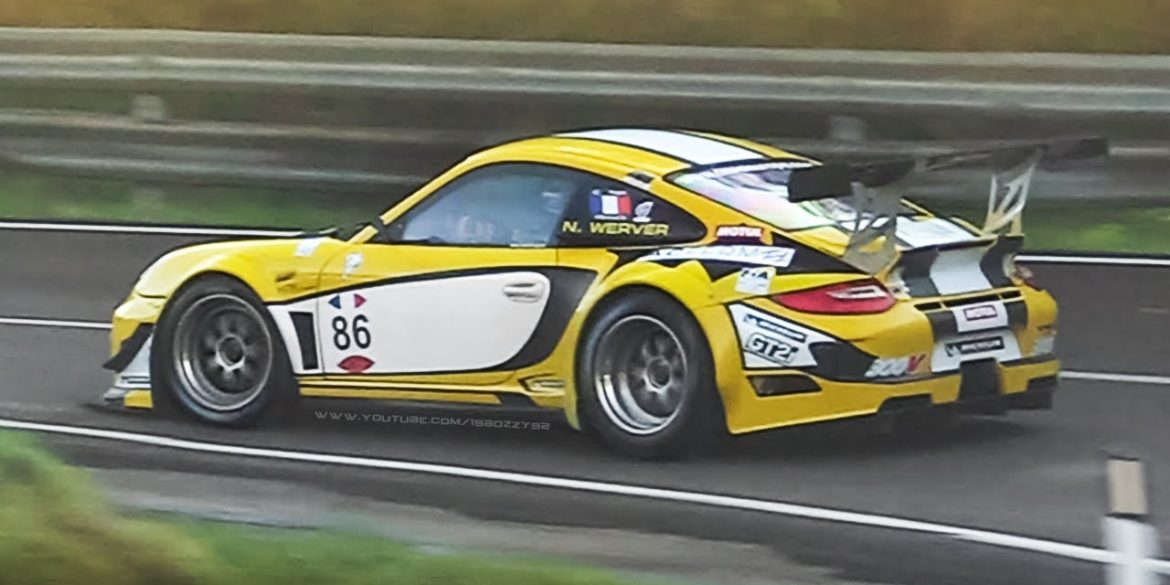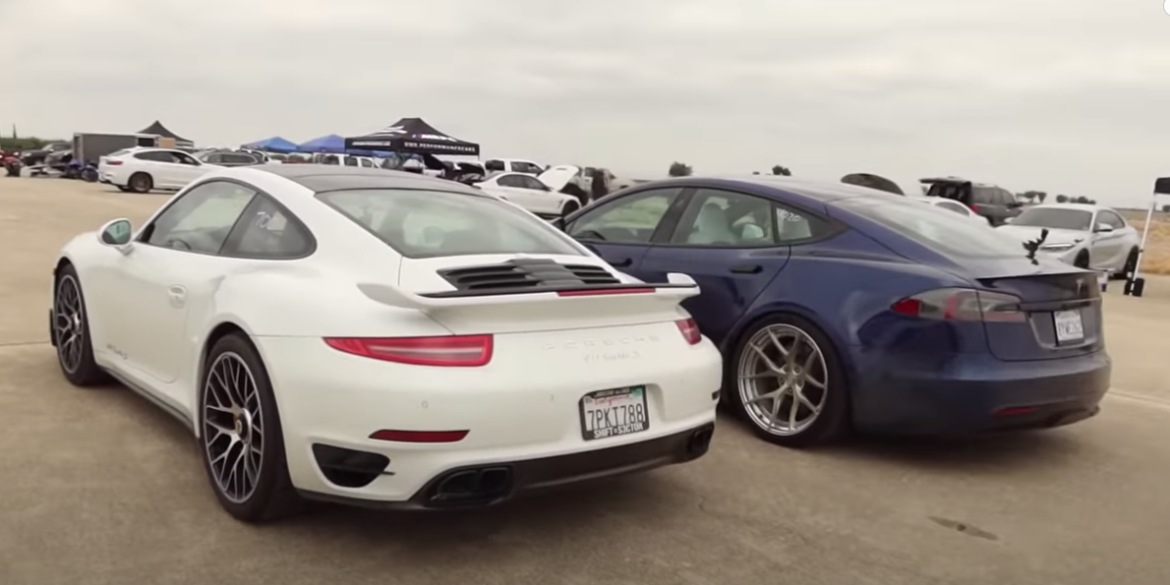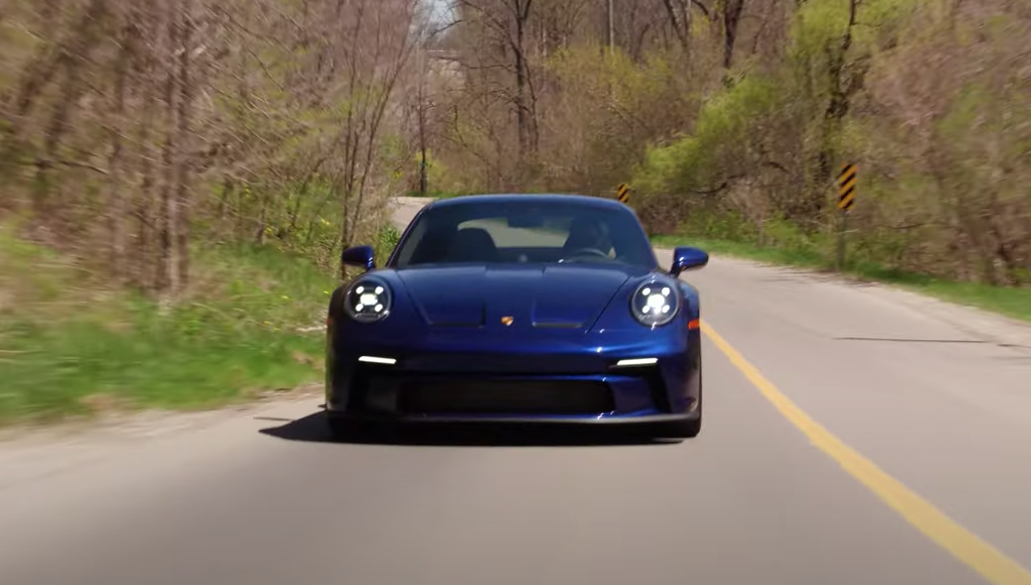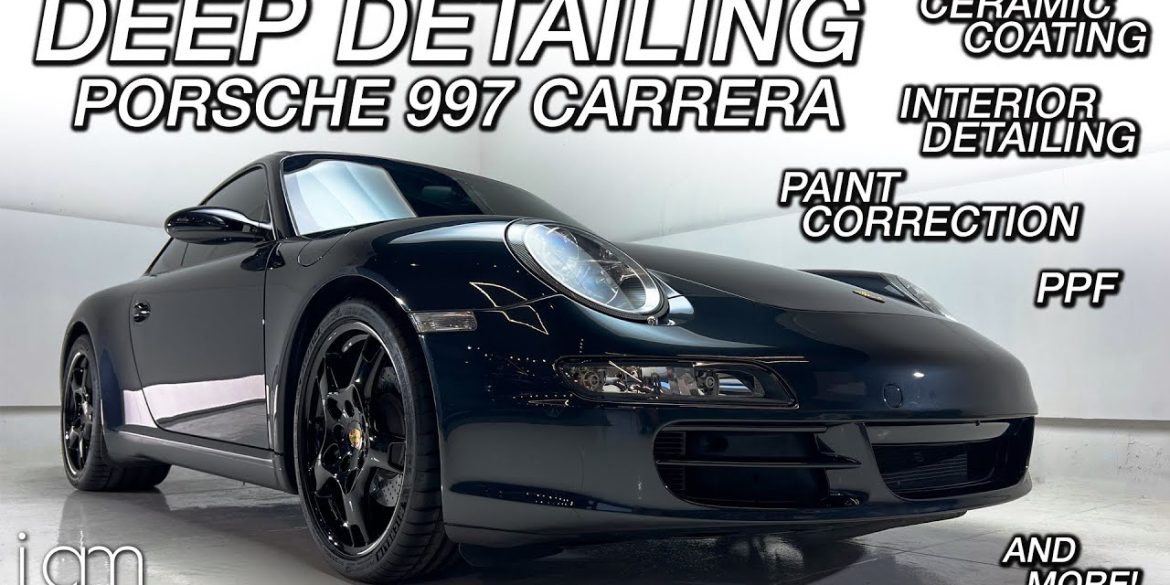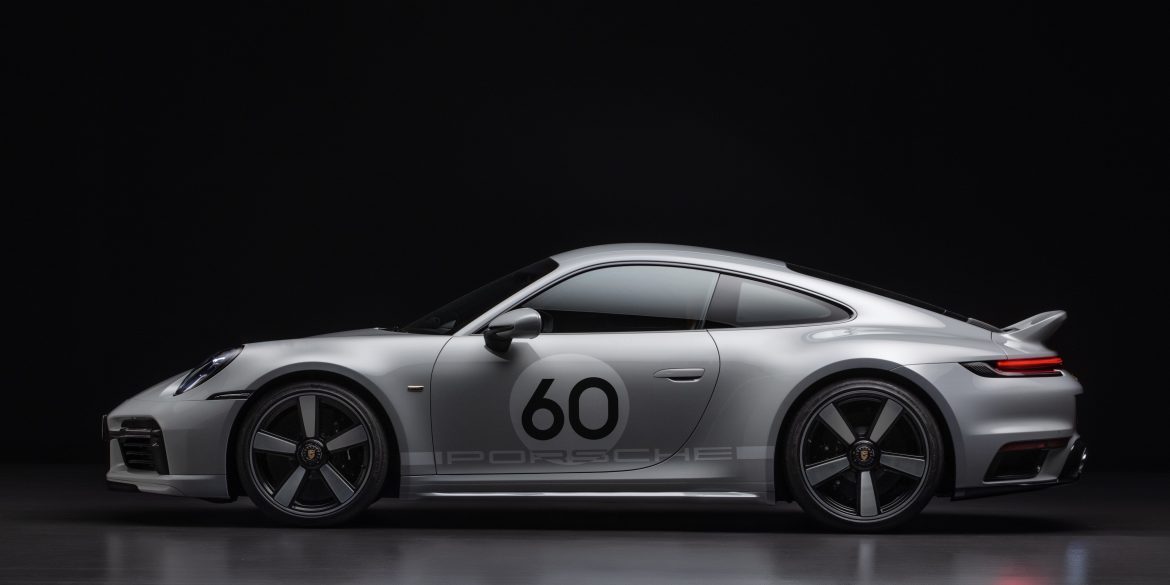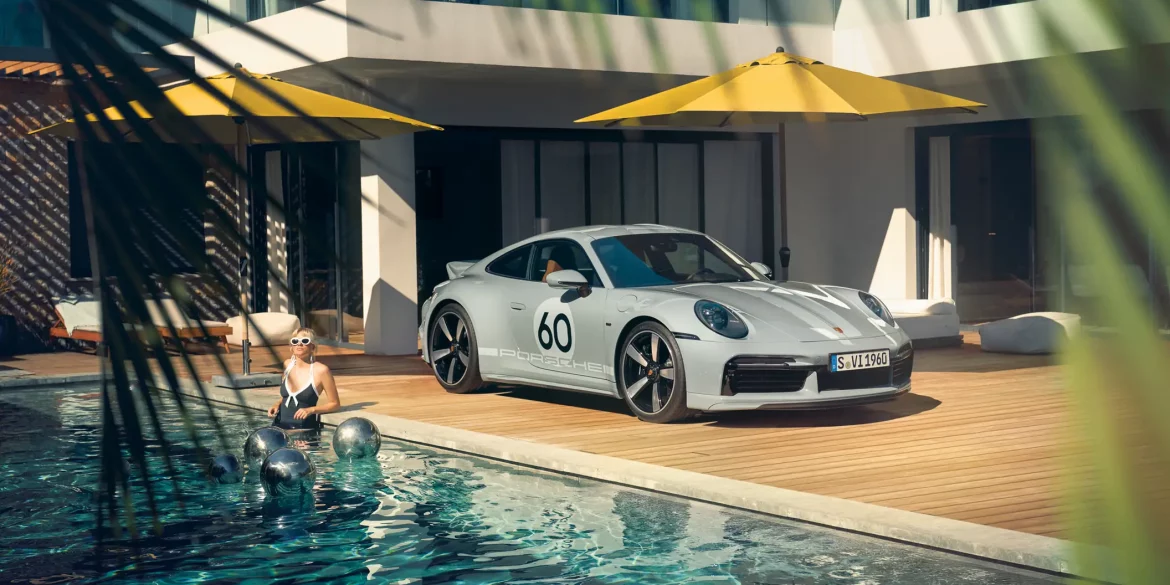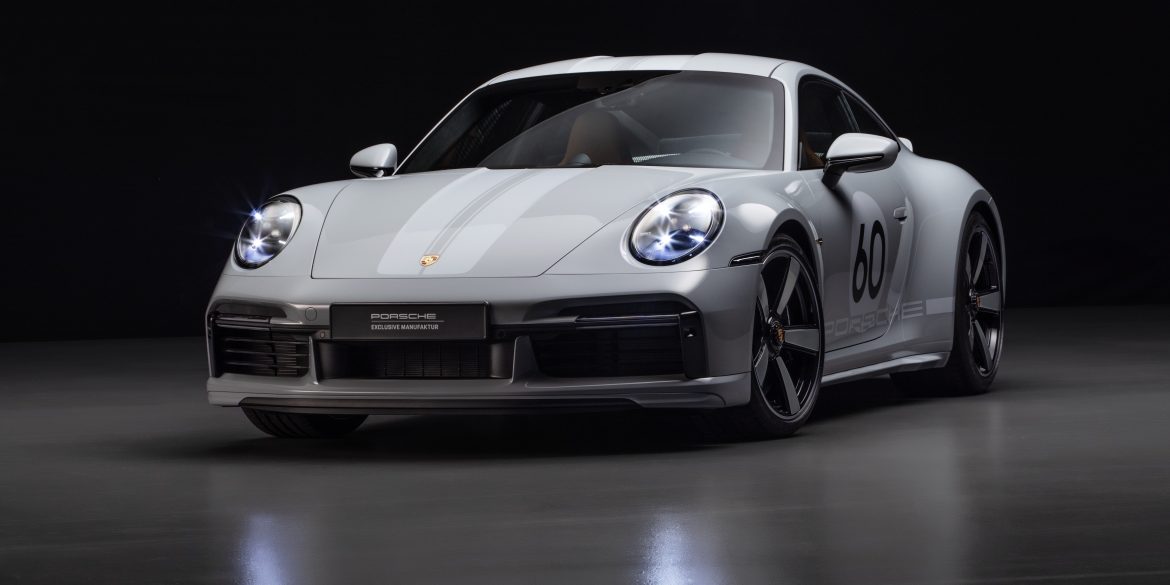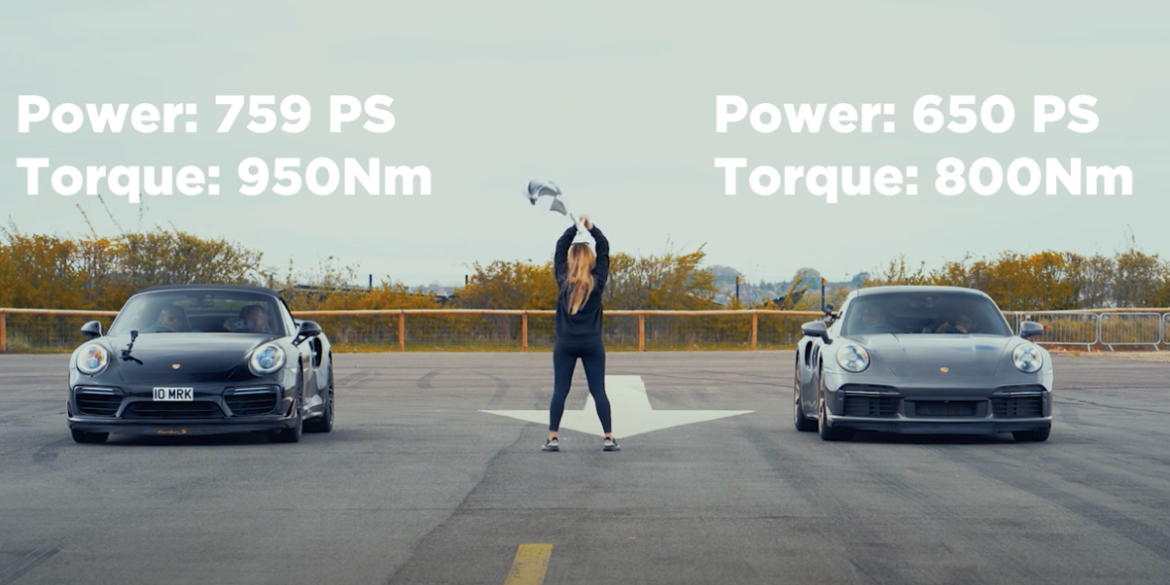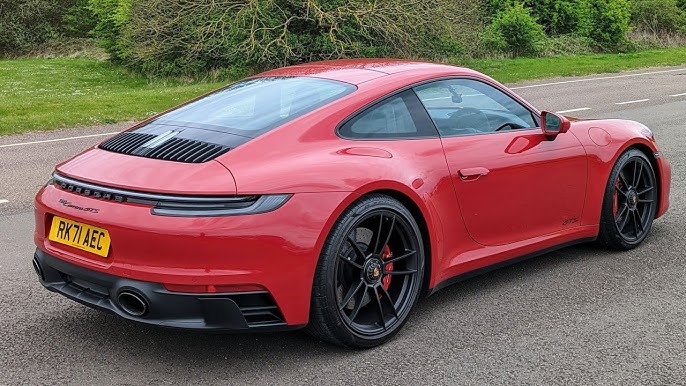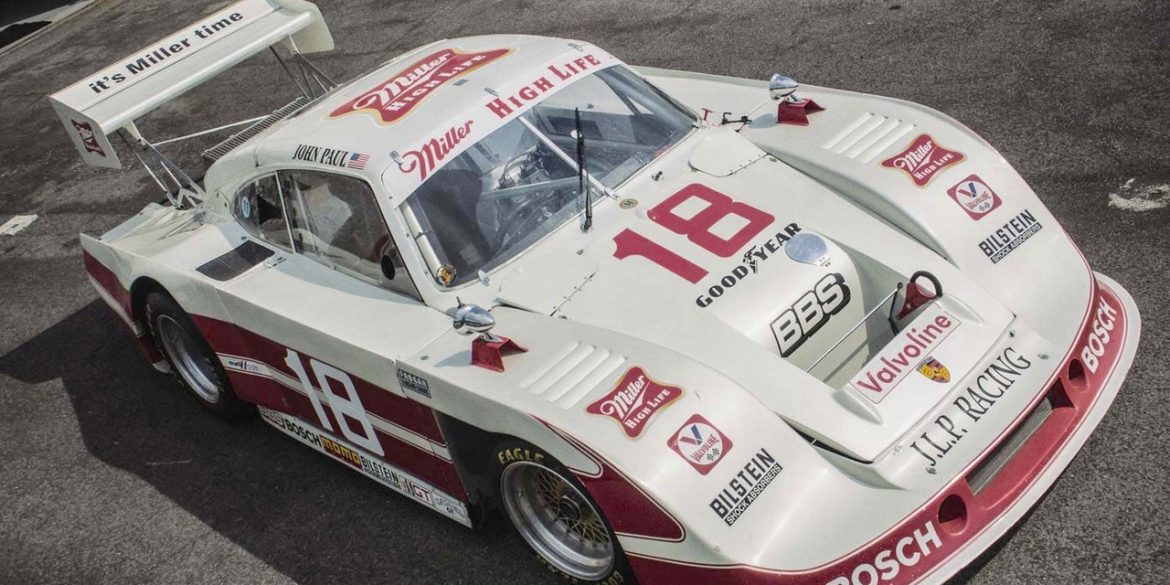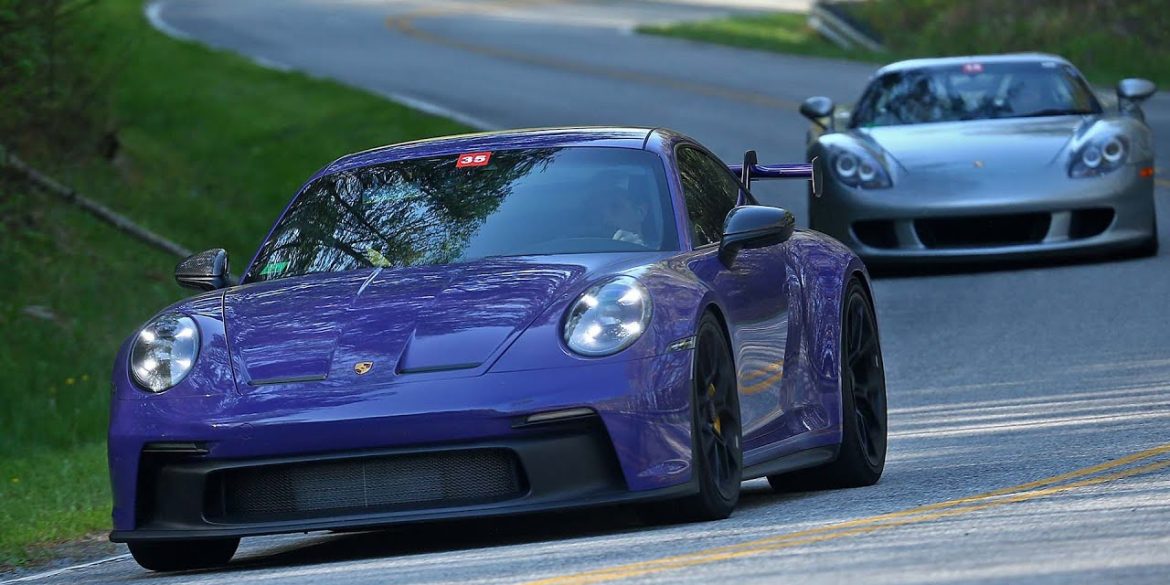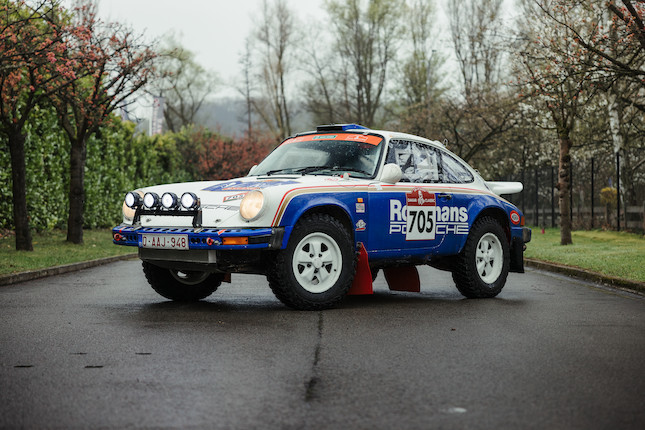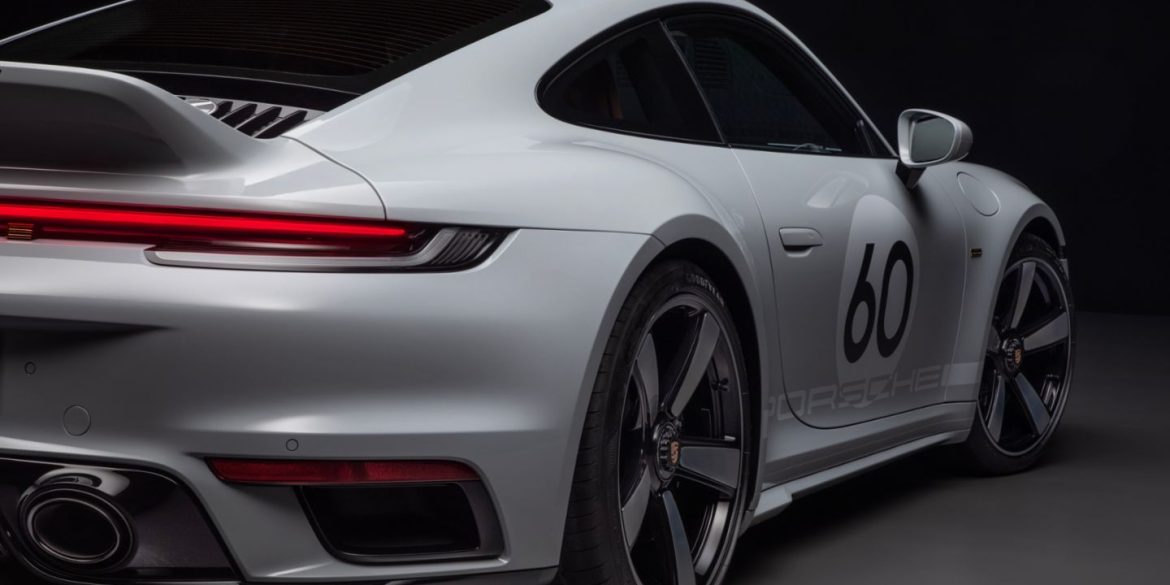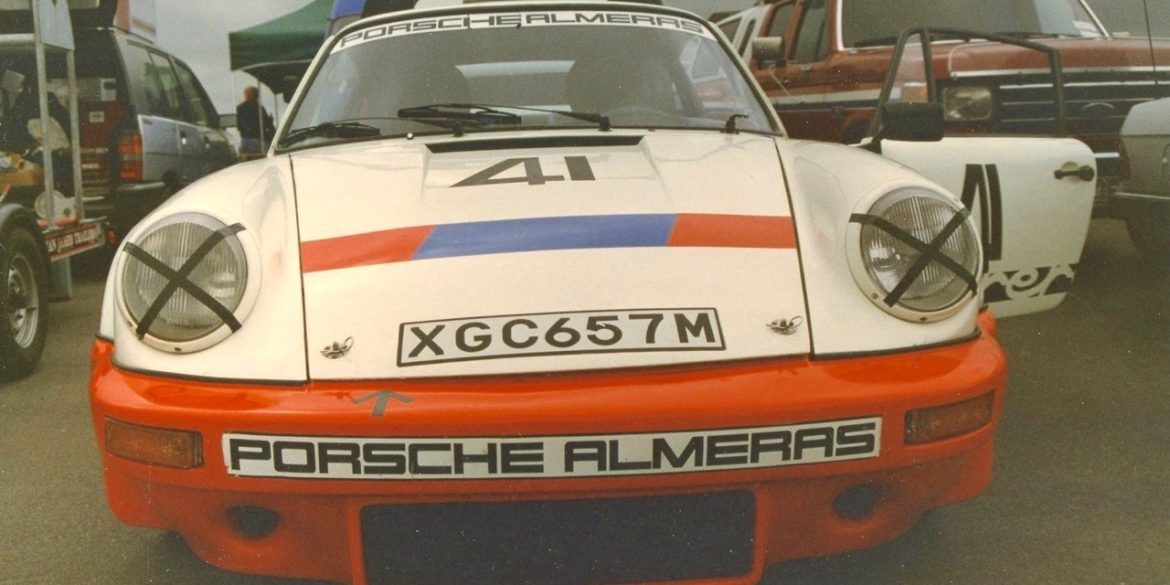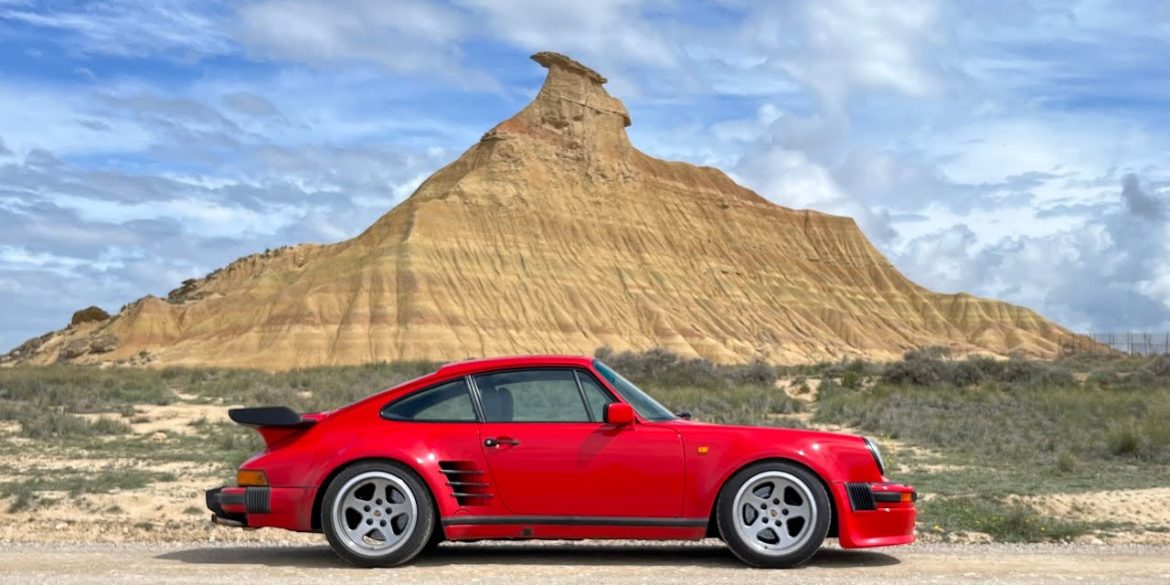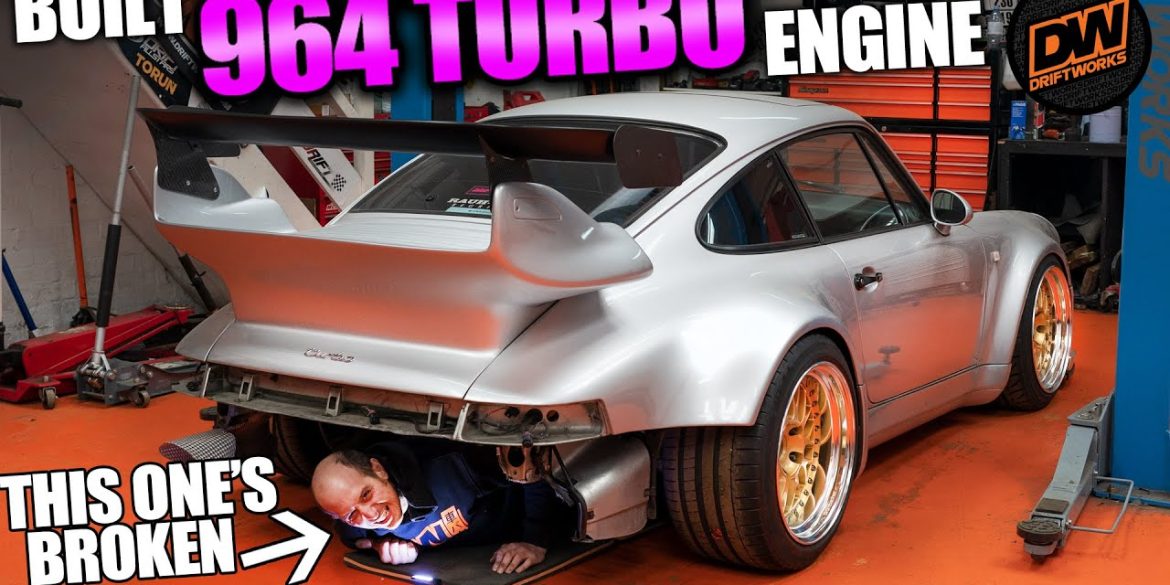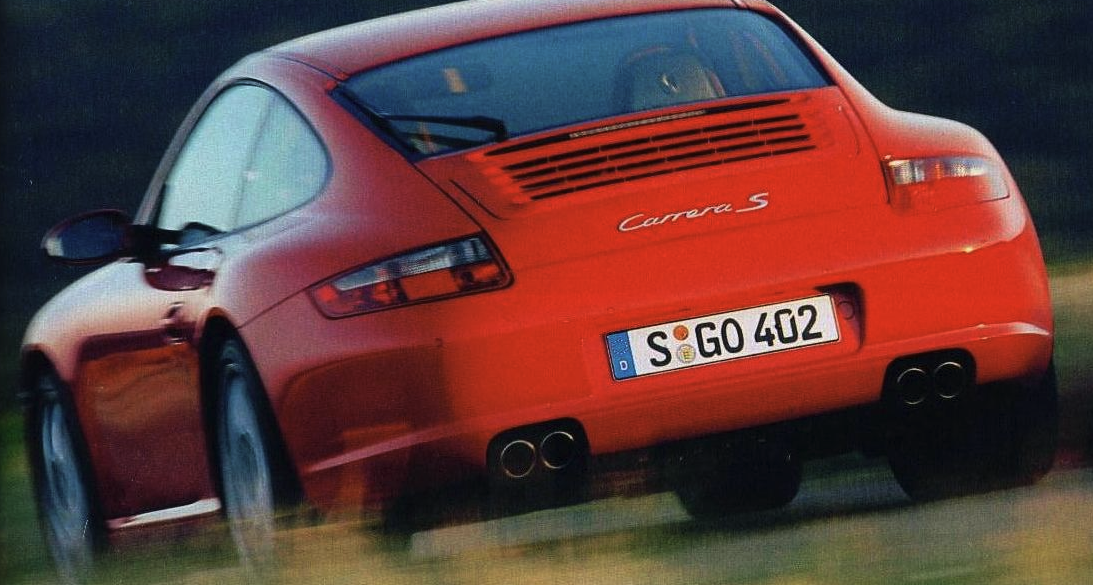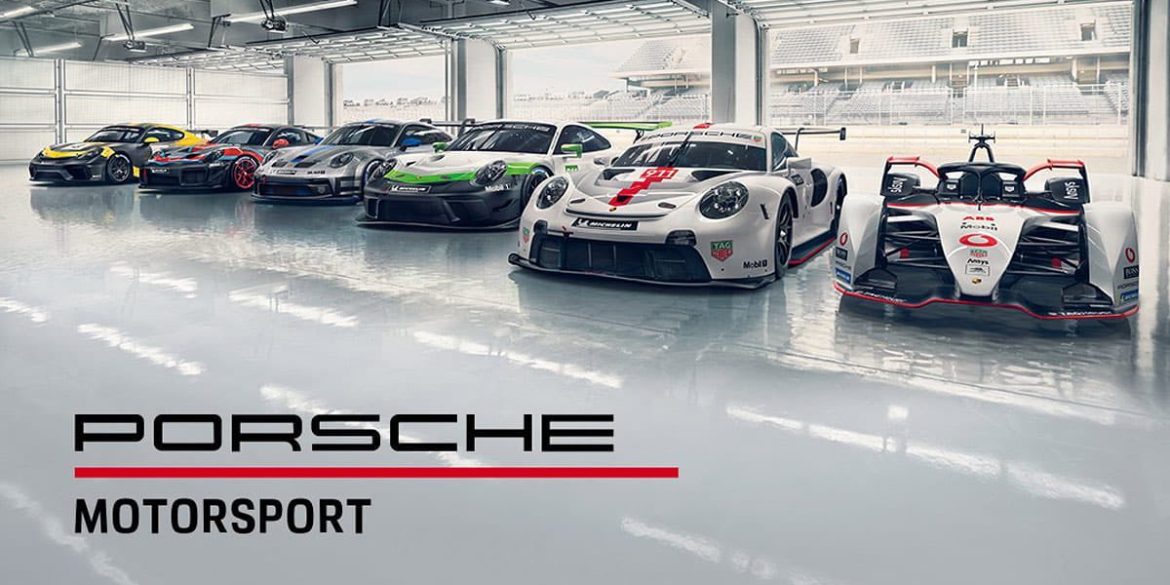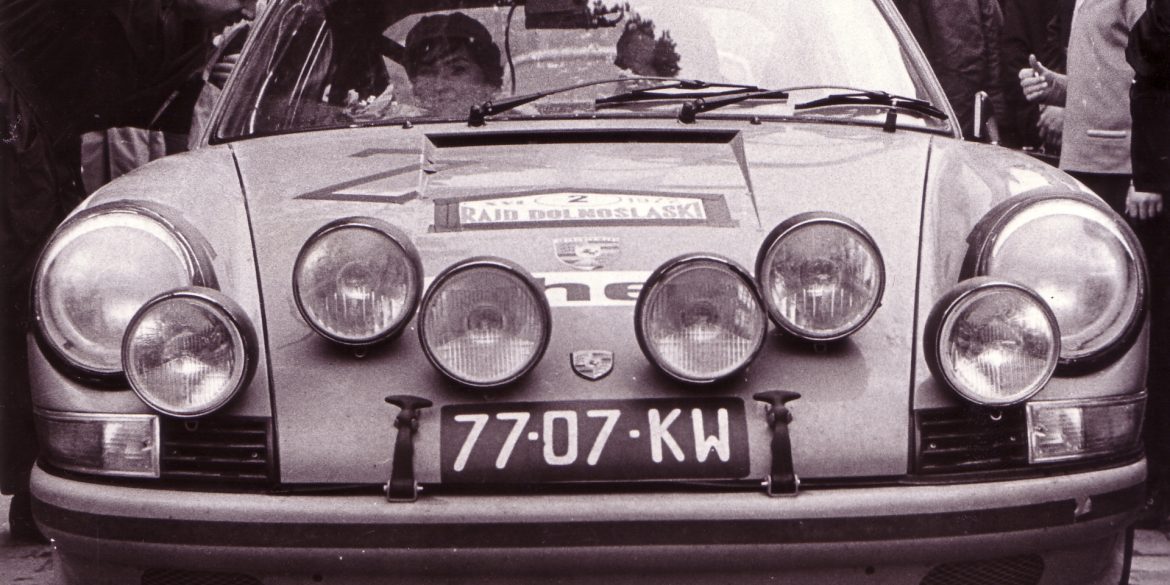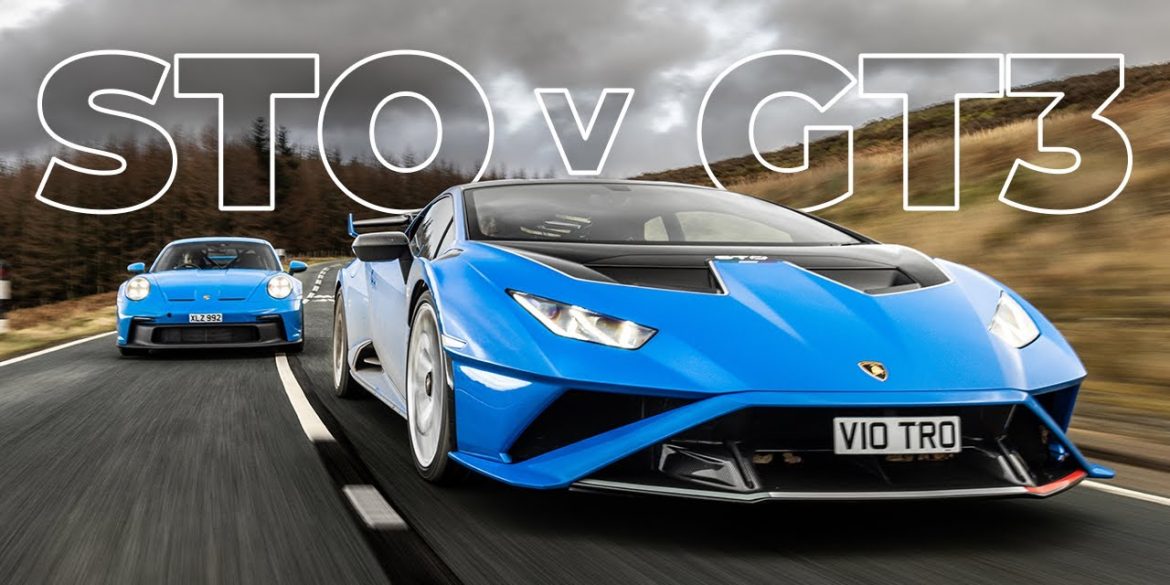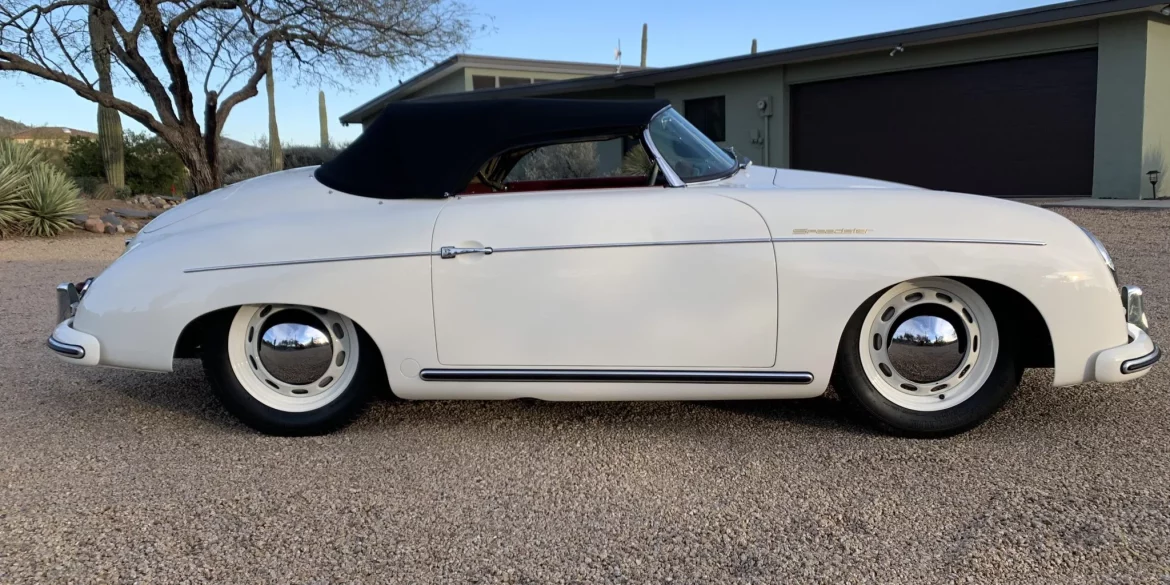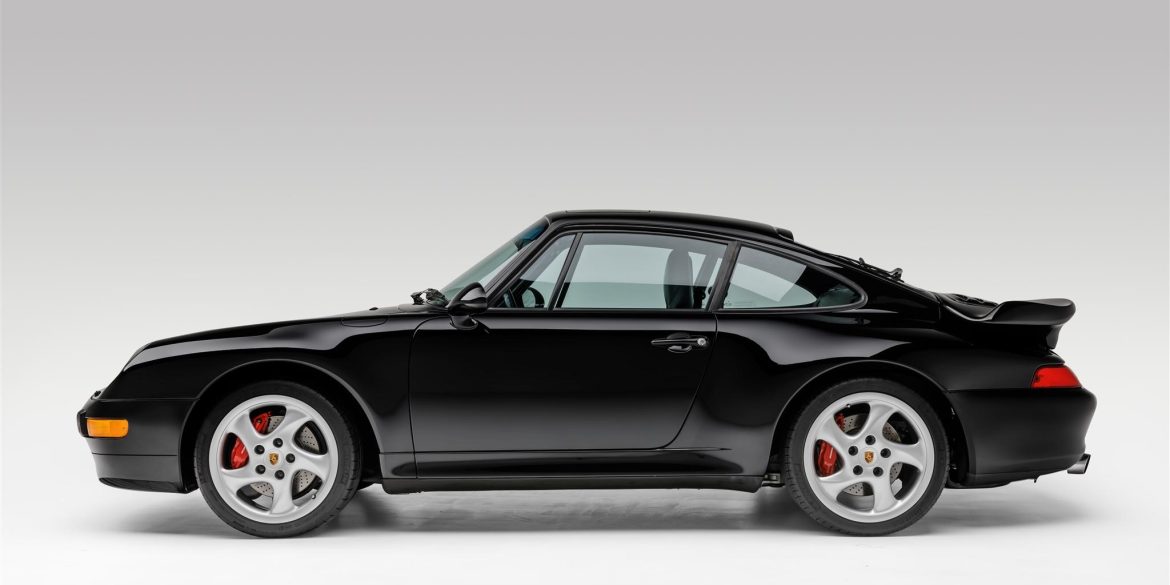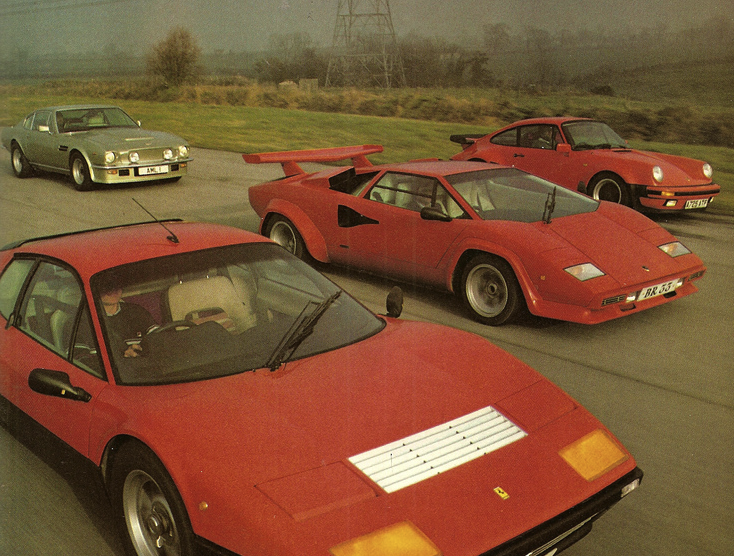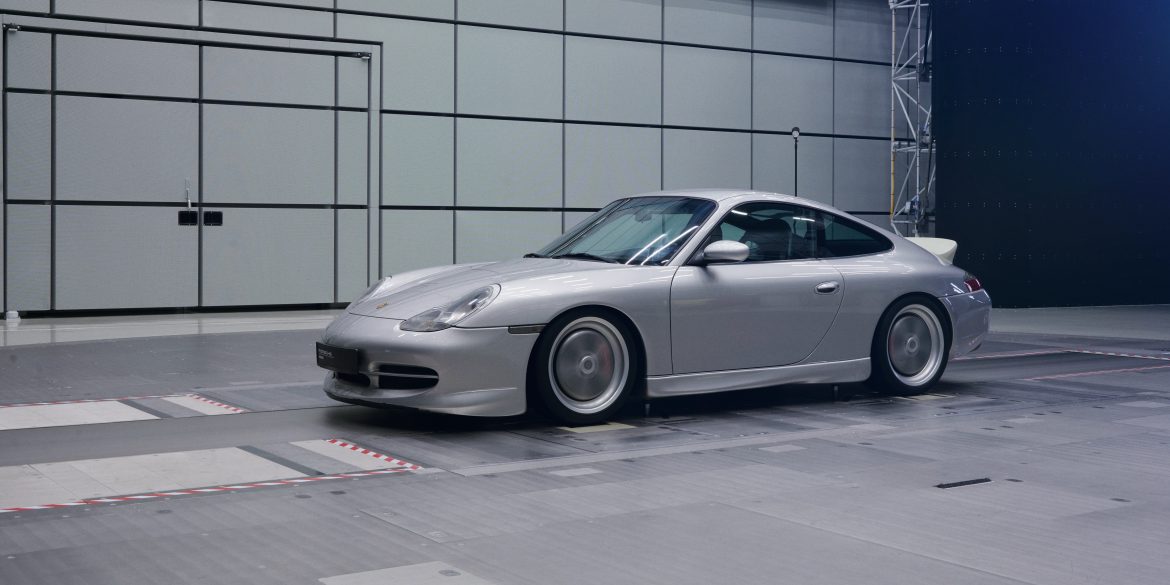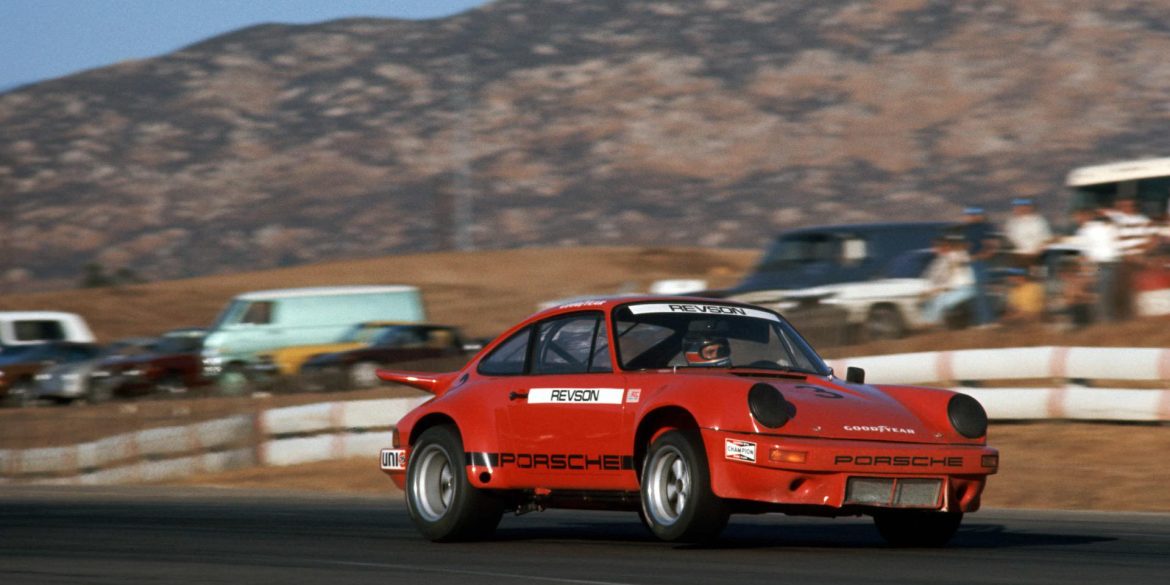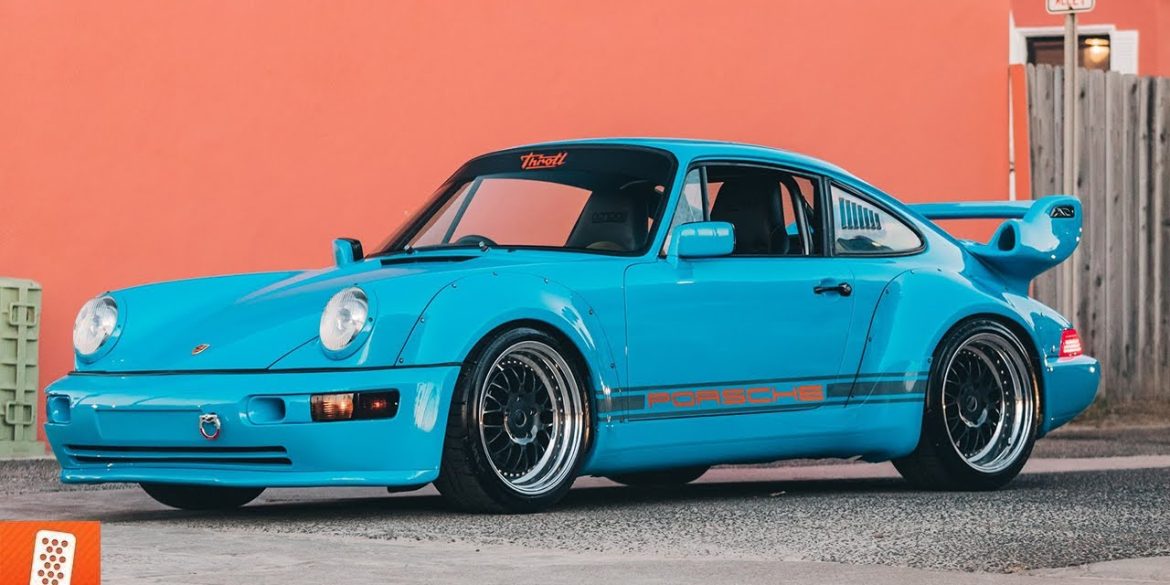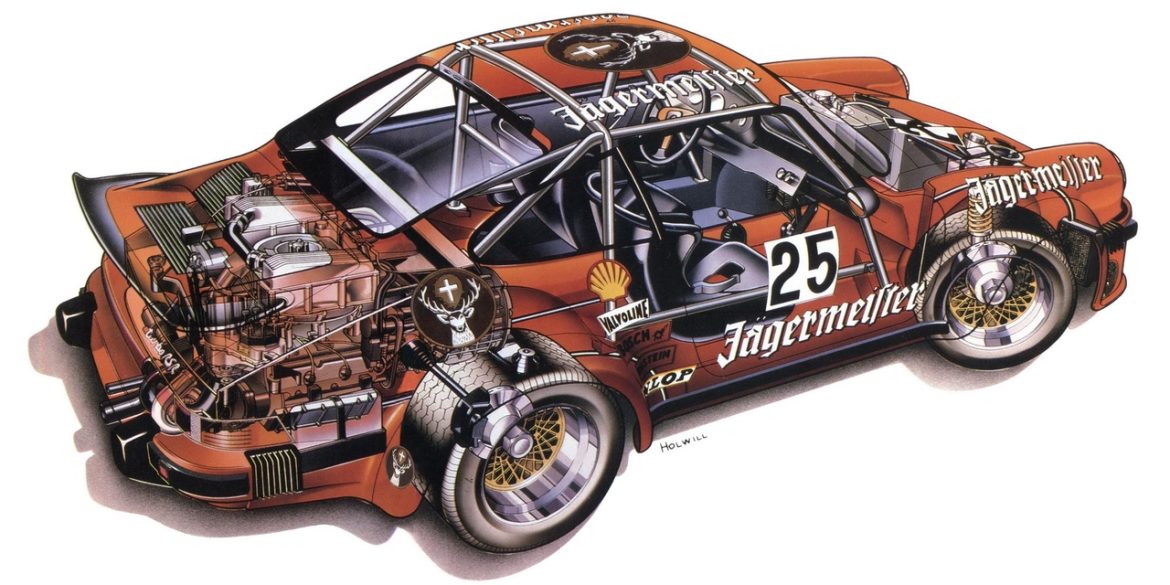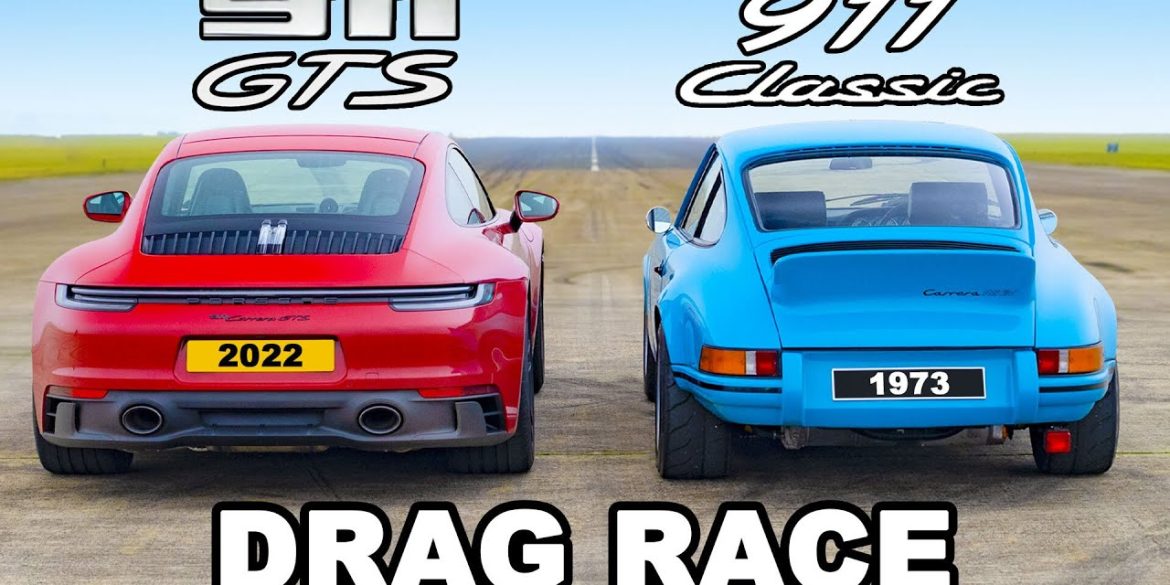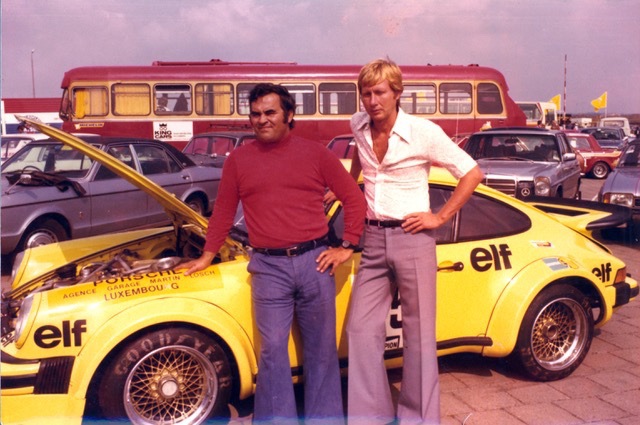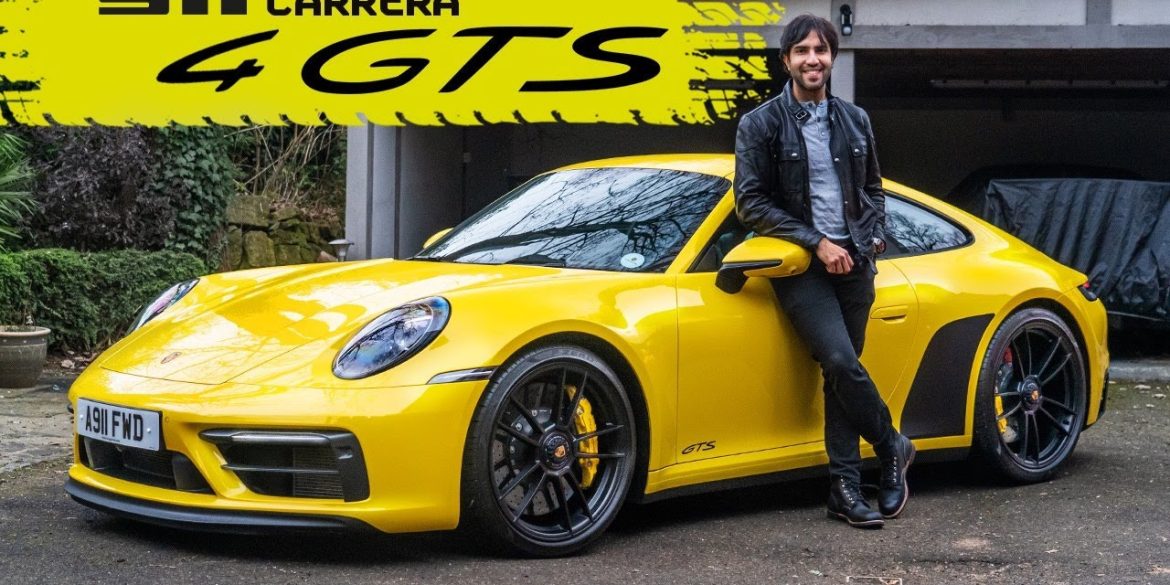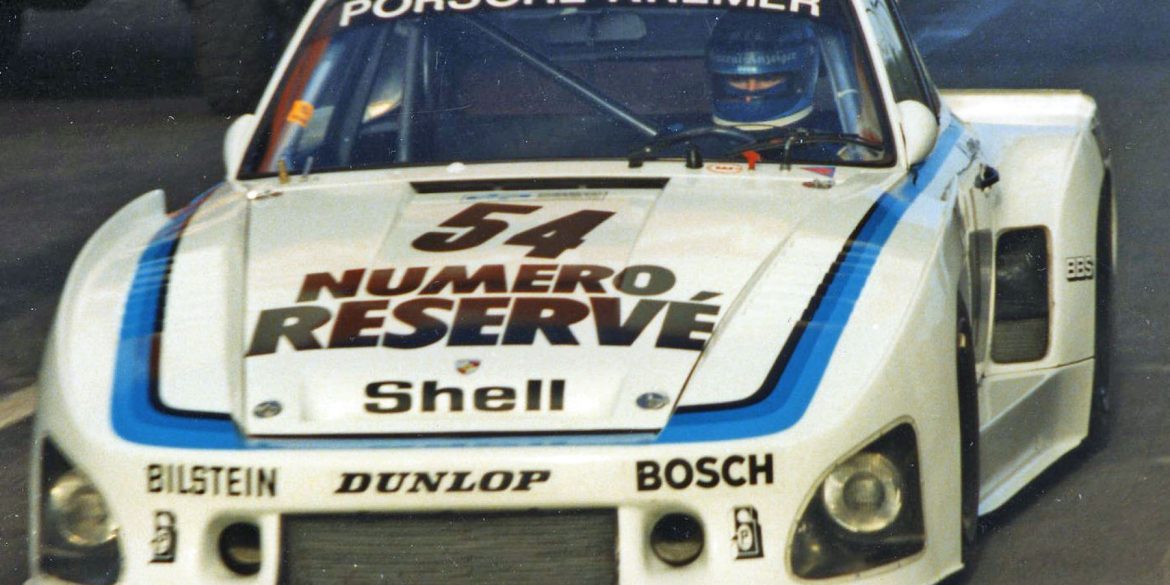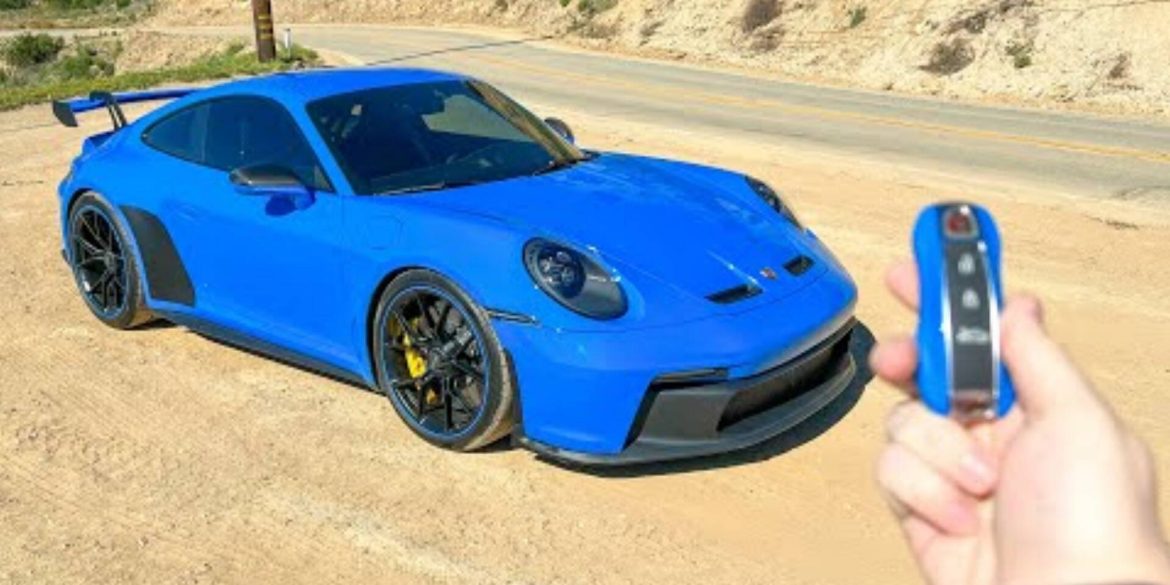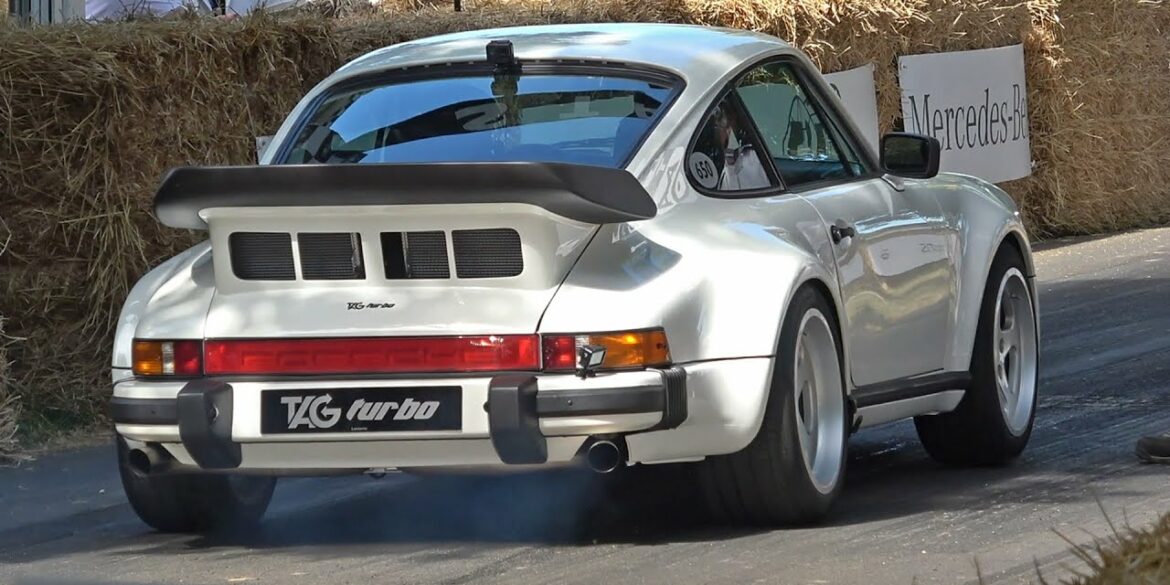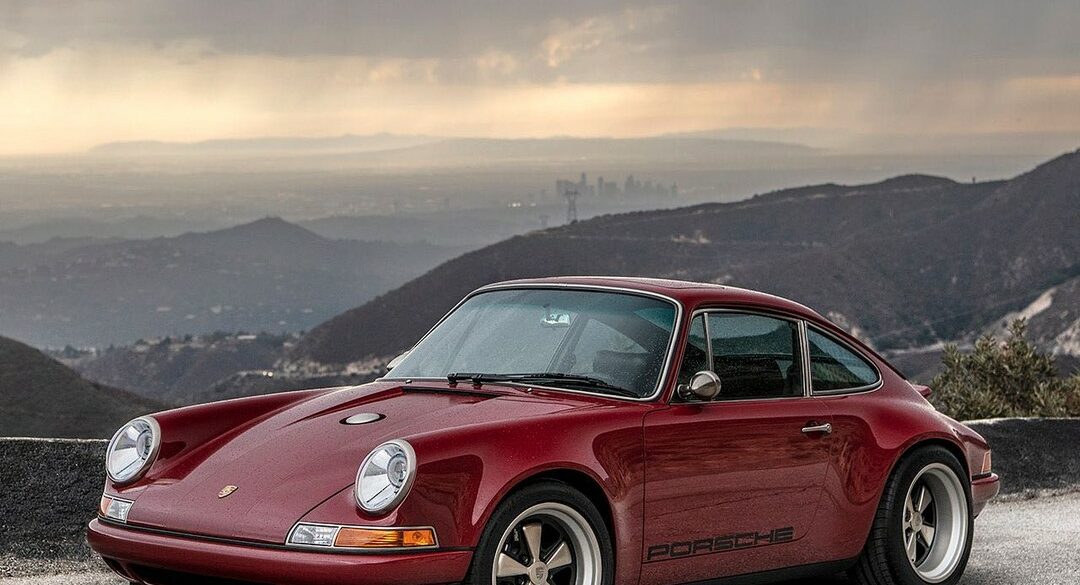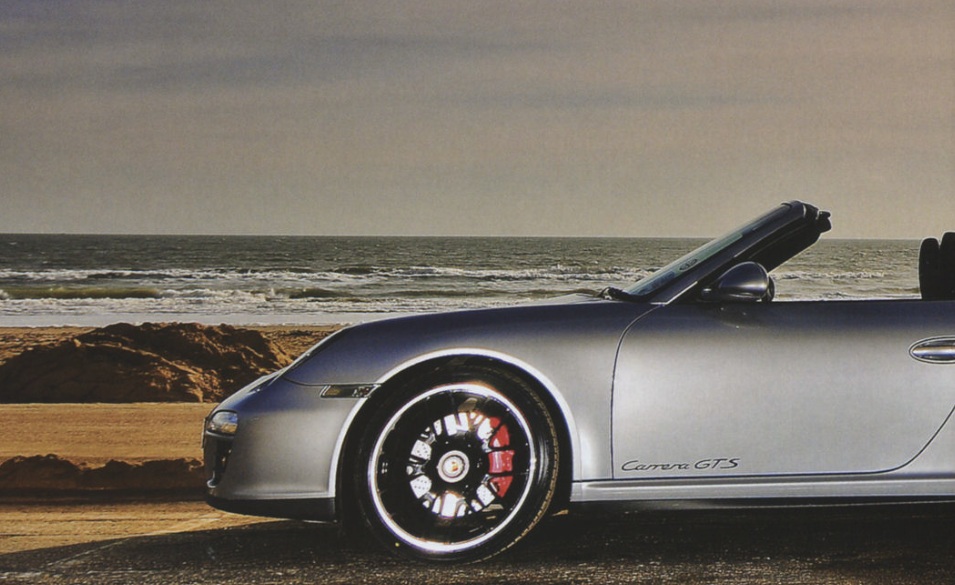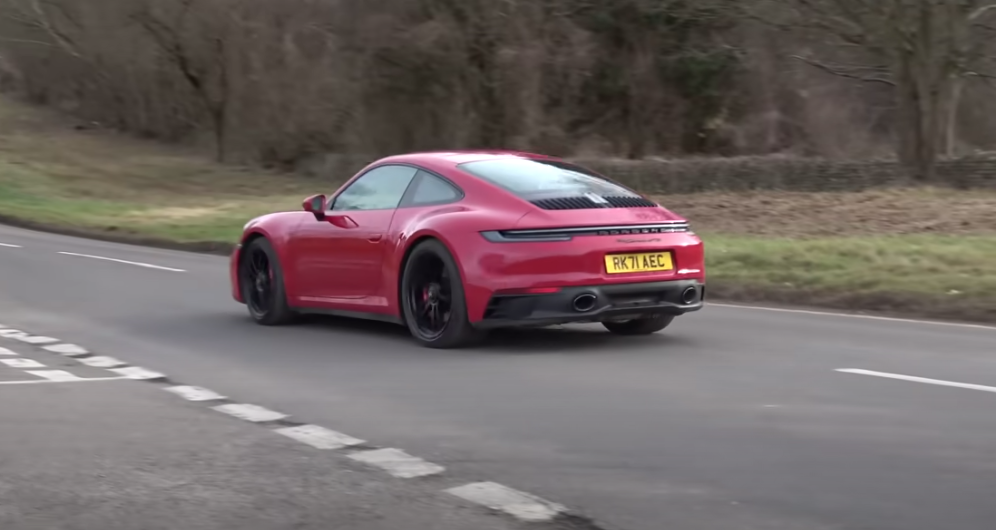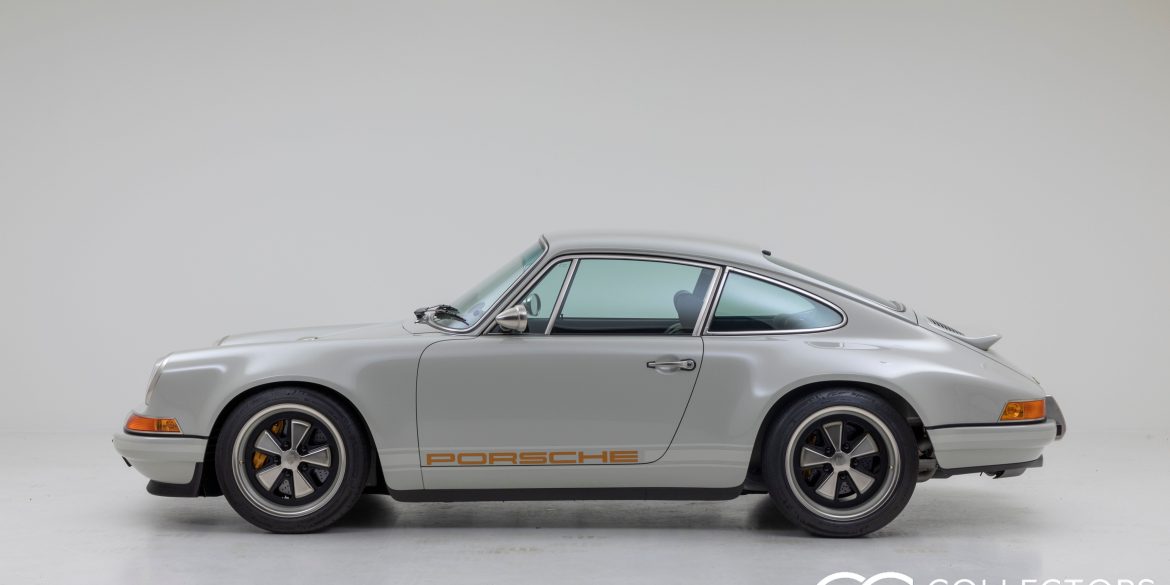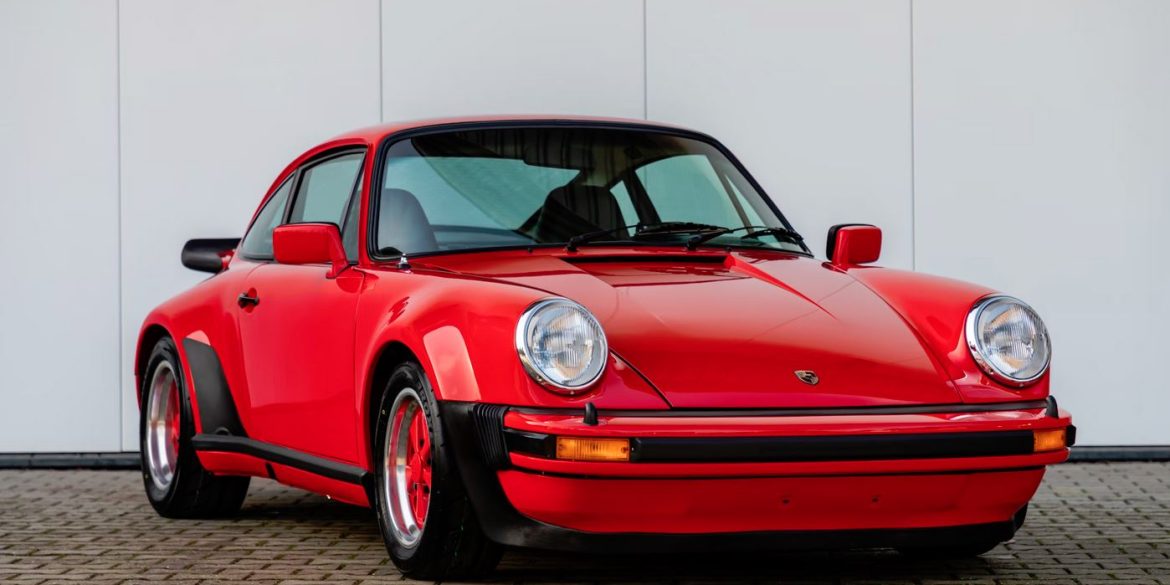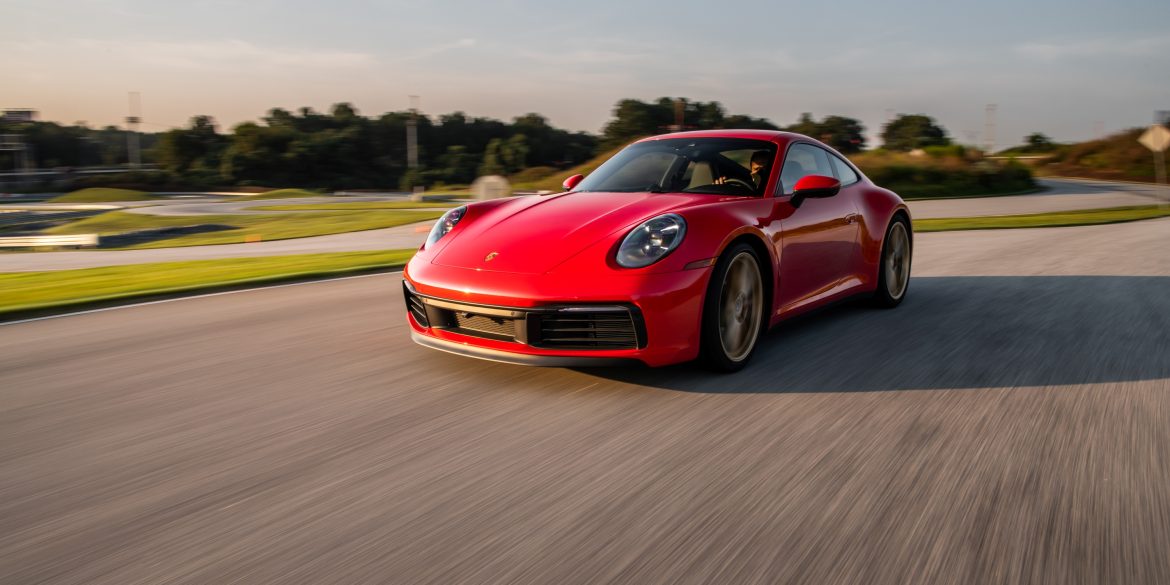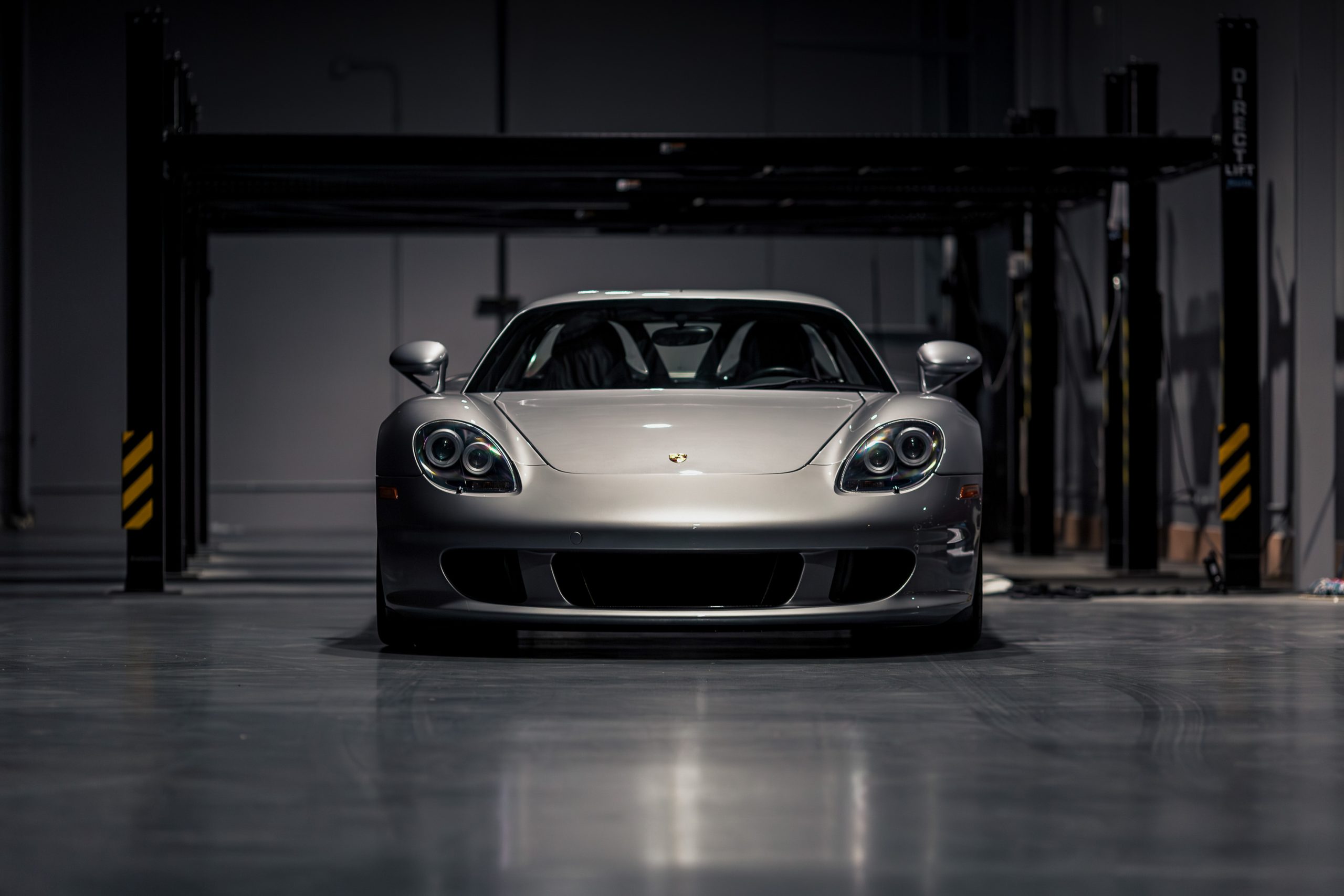In this very special video, the crew from Supercardriver join Tom Hartley Jnr as he talks them through the latest unicorn on offer; the Porsche 911 GT1 EVO. As 1 of only 9 in the world, this incredibly rare car has been converted beautifully for road use – but how...
What makes this 50-year old icon so special? The Carrera RS 2.7 was conceived as a 911-derived race car and was the first production street/race 911 widely offered to the public. The company’s philosophy was that Porsche’s (except for pure competition models) should be used for daily transportation. Porsche built...
This insane 1969 Porsche 911T with a 2.8 MFI engine is the very definition of “Classic Porsche 911 modified”…so why would this Youtuber go even deeper and drop the motor right after buying it? Find out in this video below. ...
$1.45M Porsche 930 with Formula 1 Engine by Lanzante This is Lanzante’s Porsche 930 TAG Turbo and its limited to just 11 examples. This 930 might look like a normal Porsche 911, but its powered by a 1.5 liter TAG-Porsche Turbo V6 engine from McLaren which were used to power...
The 13th and final Porsche 911 Stinger GTR Limited Carbon Edition have just been announced by Russian tuner TopCar Design. For this particular example, it was wrapped completely in green carbon fiber. It was August 2021 when TopCar announced the project of creating carbon-bodied 911 Turbo S. By January of...
Porsche 911 Turbo Prices & Depreciation Porsche 911 turbo values trended up for a long time; but this trend ended. Prices remained flat for most models during the first half of this year. This goes for the 997, 991, and 992. However, prices still increased in the 996.1 and 997.2...
A Drive That Dreams Are Made Of...
Even before the 2022 Pikes Peak Hill Climb, it has already been reported that David Donner will attempt to beat the production car record at the 100th Pikes Peak International Hill Climb in the latest Porsche 911 flagship. The time to beat was 10 minutes and 18.488 seconds which was...
There is something about the way that a Porsche looks that is just right. The proportions of the race cars, the balanced look of the 718s, the raw beauty of the 911s. They say that the Italians design with passion, but we think it’s a fairly easy argument that some...
The Big Guns Go Head to Head “Supercar drag races don’t get much better than this! We’ve brought together a Lamborghini Aventador SVJ, a Porsche 911 Turbo S & a McLaren 720S to go head-to-head over the quarter-mile! So let’s check out the stats. Starting with the ever-reliable Porsche, it’s powered by...
Chassis No: 911 460 9029 Engine No: 684 0053 Prod. No: 104 2302 G/box No: 716 1222 (15/1) Colour: White/Gold First delivered to: Sonauto Dealership , Paris, France Aluminum roll bar fitted First registered as: 556 ACR 75 Awaiting the start of the 1974 edition of the Tour de France...
The sights and very loud sounds of 996 race cars tearing it up on track. Great way to start the morning...
Note: All images in this article have been provided by Hoonigan Racing and are either official renders or actual pictures of the car itself. If you’ve been around the internet with even a molecule of interest in cars or motorcycles, chances are you’ve heard of Ken Block. But if you’re...
On-board drive & in-depth review An on-board drive & in-depth review of the specs and build principles applied to our Lightweight ’92 Porsche 964 Weekend Racer. We focus on the driving characteristics of the 964 model range and how our approach to weight and gearing maximises the performance and driving...
Is it Worth An Extra $10,000? How significant is the $10,000 lightweight package for the 992 Porsche Turbo S? It subtracts 80 lbs from the overall package, resulting in 0-60 times in the *low 2’s* and a quarter mile number in the 9’s at 140 MPH. This is an insanely...
Old vs New – Choosing A Hero The 2022 Porsche 911 GT3 Touring and the Dodge Viper GTS are two absurdly awesome and extreme sports cars. A MASSIVE 8.4L V10 powers the Viper, pushing out 640 pure American horsepower and 600 lb ft of raw torque. The 4.0 L flat-six...
I just love the Porsche 930 Turbo built between 1978 and 1989, with her massive rear ‘whale tale’ wing and those wide fenders over the rear Fuchs alloys, but those cars have become classics by now, and they come with a price tag to match their status … which in...
Current Porsche 992 Market and A Deep Dive into the Crazy Secondary Market Pricing If you are looking to buy a new Porsche 911 you already know that getting your hands on one through Porsche directly is really tough. If you want a 911 GT car, 911 Turbo or Turbo...
If you're not one for celebrating special models that don't improve performance, this 2023 Porsche 911 Carrera GTS Cabriolet America will be right up your alley. Porsche has gone beyond just slapping on some new paint, unique trim, and special wheels. There is some performance to go along with the history behind the America name-plated Porsche, besides the incredibly long name.
2023 Porsche 911 Carrera GTS Cabriolet America Edition (992.1) Technical Specifications Model 911 Carrera GTS Cabriolet America Edition Design and cylinders Twin-turbo boxer 6 Number of cylinders 6 Fuel grade 98 Bore 91.0 mm Stroke 76.4 mm Displacement 2,981 cc Max Power 473 bhp @ 6500 rpm Max Torque 420 ft lbs...
2023 Porsche 911 Carrera GTS Cabriolet America (992.1) Pictures & Gallery...
Cracking car and history After the trip to Spain, Harry’s tweaked ‘Sonderwunsch’ Porsche 930 Turbo S was fully run in and once Jaz Porsche had completed its first service, he took it to Lichfield Motors where they put it on the dyno to see how power it really produces. If...
Two of the Best – Head to Head This is a pretty timely comparison video because I have been spending the last few days arguing with a few friends about whether the 991 GT3 Touring is better than the 992 GT3 Touring. Not sure I agree with the end result...
My first “real” racing car was a Porsche RS/R, which I bought in the mid-1980s. Previously, I had done quite a lot of Hillclimbs in England with, first of all, a variety of Jaguar XK120s and then a 1974 Porsche RS 3.0, (911 460 9034), which was followed up by...
McLaren 600LT vs Lamborghini Huracan STO vs Porsche GT3 RS This is actually a pretty fair comparison video. For those of us who would choose the GT3 RS, it is worth considering the 600LT and the STO....
Tiff visits Rob Dickinson’s workshop where he shows the modifications he’s made, using the best parts from different cars. Tiff is then allowed to drive his Restomod Porsche 911 round the Willow Springs Track....
On this week’s drag race it’s a battle between three unlikely contenders at the line. The Chevrolet Corvette visits the other side of the pond to face two German nameplates: the Porsche 911 and Audi R8. The only thing common among these three cars is that their power plants all...
Paul Stephens Clubsport 320 ‘Touring’ We have already talked about the exciting Air Cooled Sunday program that Collecting Cars is running and why we, as Porsche geeks are spending a lot of time on their site drooling over the cars we want to buy. This is the Paul Stephens 320...
Porsche 911 (992) GT3 Touring Review Chris got the opportunity to get behind the wheel of the Porsche GB demonstrator GT3 Touring ahead of the delivery of his own car! The 992 GT3, regardless of whether optioned with or without a wing, features the same potent flat-six motor we have all...
The 911 GT3 with the Manthey Performance Kit was able to unleash its full potential on the Nürburgring Nordschleife, the traditional test laboratory for sports cars at Porsche. With Porsche works driver Kévin Estre at the wheel, the modified GT sports car ripped round the 20.8-kilometre course in Germany’s Eifel...
The 2022 Porsche 911 GT3 is Bonded to Driver DNA (POV Drive Review) Join Miles in the 2022 Porsche 911 GT3 in Shark Blue with all Leather/Race-Tex in Black with Shark Blue Stitching as he shares his expert driving impressions....
Collecting Cars is currently offering a 1978 Porsche 911 SC ‘Safari’ by Tuthill Porsche. It is a great custom competition build which was driven by rally legend Ken Block for the 2022 East Africa Safari Classic Rally. It remains in its ‘as raced’ condition. At the heart of the build...
The Sound of Hillclimb Happiness Rampa da Falperra specialist José Silvino Pires took his beautiful Porsche 997 GT3-R once again to the mythic Hillclimb held in Portugal, displaying the incredible sound and efficiency of this 4.0L Flat 6 Naturally Aspirated Monster, producing over 500Hp/9.400Rpm. While not built for Hillcimb Racing,...
Which is quicker – a Porsche 911 997 Turbo S, or a BMW M5 CS? Well, it’s time to find out! We’ve got Mat in the Porsche, and he’s facing off against this range-topping M5 to see which is the king over the quarter-mile! So how do they compare? Starting with...
Acceleration & Top Speed Run We have always been fans of the AutoTopNL POV videos because there is no fluff. No background music, no annoying narration or talking, it is just the driver’s view. In this video we get to see what it is like driving the all-new 992 GTS...
James takes out this low mileage 996 GT3 RS, currently live on Collecting Cars, to discover how it differs from the standard GT3 of this era. The 996 GT3 RS is one of the great truly engaging and analogue track-focused driver’s car. With only 682 built, it is the rarest GT3...
2019 Porsche 991.2 Speedster Auction I could spend all day looking at cars being auctioned off at PCarMarket. Almost every day I find a special Porsche that I really want to buy. Moving forward I am going to share these cars with you guys since lots of our readers ask...
Singer Big Sur Commission We are massive fans of Singer here at Stuttcars. We love every singe car they have ever made because each and every car is unique and custom and a one-off based on the owners own desires. Every single car it produces from advanced prototypes or a...
A great explanation of what goes into add two turbos to the 991.2 GT3 RS. The guys at Gintani have been building high performance street cars for a very long time and their videos are really in depth and explain a lot of the thinking and planning needed to pull...
The guys at PCarMarket have an auction going at the moment that all Porsche fans should know about. A final salute to the venerated Mezger engine as well as the ultimate evolution of Porsche’s 997, the 911 GT3 RS 4.0 was produced in a limited series of just 600 cars worldwide...
As somebody who owns a black 991.1 911 GTS, I can tell you that cleaning and maintaining black paint so it looks its best is really hard. So this morning when I stumbled on a video Larry from Ammo NYC who is detailing and polishing this rare, black 964...
We recently stumbled on a great article by Robb Report on a father and son team that builds and sells a concours-quality tribute to the original Porsche hot rod, the 1975 911 turbo. They releases the C9 911 RS Turbo to the automotive world at the Amelia Island Concours d’Elegance...
A great video of a 1988 911 3.2L Carrera on its way to Bond Group for some light maintenance. Sounds awesome....
911 Turbo S Cabriolet from Madmen Brabus German tuner Brabus is known for their outlandish Mercedes-based projects, but today we found out that they have finally tried their hand at Porsche products. First up is the PowerXtra P38S-820 and it has a whopping 809 hp and plenty-crazy 700 lb-ft of torque....
Detailing a 997.2 Turbo S – Paint Correction, Wheels Off + Modesta Coatings We all know how obsessed we are about our Porsches. For those of us who spend hours detailing our prized possessions, this video is going to be totally relatable. Over a four day period, the flat white...
Fabspeed Motorsport has been setting the industry standard for quality and performance since 1994 and we continue to revolutionize the Exotic Car Industry. Their exhaust systems sound amazing and usually unlock quite a bit of power. Now they have set their sites on the all-new Porsche 911 GT3. They’re claiming More...
What car and what a sound!...
Guntherwerks 993 Review We know that restomod 911s are a divisive topic amongst Porsche enthusiasts, but when I watch reviews like this, it is hard not to fall in love with the work of companies like Guntherwerks and Singer. The details, the craftsmanship and the the ability to move the...
I was having a hard time getting going this morning. This video did a great job of waking me up. Ready to get going for the week. This video is a throwback to 2018 when at the FIA Hillclimb Masters race in Gubbio (Italy). This video is about the powerful...
I know these drag races are kind of pointless to most of us, but I do think they are entertaining. If anything, it shows just how far electric cars have come and what an exciting future they offer us car guys. I would still choose a 911 10 out of...
Porsche 911 GT3 Touring review by The Straight Pipes The Porsche 911 GT3 Touring has a wonderful 502 horsepower and 347 lb-ft of torque from a naturally aspirated 4.oL flat 6 engine. The Touring makes sense for those who envision their GT3 more as a daily mode of transportation than...
Porsche 997 Carrera gets THE WORKS! Paint Correction, Ceramic Coating, PPF I have a confession to make. I like to watch people detail cars on youtube. I can spend hours watching them take filthy cars and making them look new again. The before and after is what does it for...
A total of 1,250 examples of the limited-edition model by Porsche Exclusive Manufaktur. While the original was a Carrera S, this time around, the power and handling come from a much feistier car, the Type 922 Turbo S. Returning is that amazing grey paint, that swooping ducktail spoiler, and the double-bubble roof. All-new is a mildly detuned Turbo S engine producing 543 HP and 442 lb-ft of turbocharged torque, mated to what can only be called a gift from the gods, a 7-speed manual gearbox.
2023 Porsche 911 Sport Classic (992.1) Technical Specifications The 2023 Porsche 911 Sport Classic is based on the 911 Turbo S so while the specs haven’t been fully released yet, we expect it to have similar specifications. The Sport Classic features Porsche Ceramic Composite Brakes (PCCB) with black calipers, Porsche...
2023 Porsche 911 Sport Classic (992.1) Pictures & Gallery...
In today’s video we watch a 992 Turbo S up against a tuned 991.2 Turbo S....
Porsche’s Exclusive Manufaktur division Works its Magic on This One-Off Speedster Check out this recent creation of this 911 Speedster, a unique car inspired by the Porsche family itself and brought from dream to reality by the experts at Porsche Exclusive Manufaktur. While the Porsche company cars were painted in shades...
911 Perfection The “sweet spot” 911 being tested and reviewed. No surprises here, the car is epic....
There are 935s, and then there are 935s… Although almost a hundred Porsche 935s were built between 1975 and 1984, with the factory building some forty two cars and customers building the remainder, JLP-4 was by far the most radical of the Group 5 breed. No Subscription? You’re missing out...
I have seen a lot of videos of cars driving around in the Smokies, but this one is probably the most exciting. Great in-car footage and all the visceral sounds just make me want more. Great video....
There are only a few annual auctions that have built the reputation of having prestigious and quality lot as Bonhams, The Monaco Sale spring event. On May 13, Bonhams is set to deliver as a number of distinguished vintage automobiles in different categories will be put on the block ready...
“What in the world is an American woman doing here with this car?” Jacky Ickx was incredulous. The legendary Formula One, sports car, and Dakar driver materialized in the desert bivouac next to Amy Lerner’s 1982 Porsche 911 SC. Lerner had come a long way to run her Porsche sports...
In 2010, Porsche released the original Type 997 911 Sport Classic. Limited run, a ducktail spoiler, a double-bubble roof hinting at its motorsport heritage, and a grey paint scheme that was both inoffensive and pleasing at the same time made it a very desirable car. Underneath, it was a 2010...
When I first started writing my book, “R to RSR: The Racing Porsche 911s” in 1987, whilst living in England, I had little or no idea which RS/RSR cars had been raced in France. This was despite the fact that France was only 21 miles away across the Channel. The...
The Porsche 930 makes for a great GT and Harry took his very own special turbo S version on a road trip to Spain to find some of the best and quietest roads in Europe. His guide to where to find the best roads and where to stay as well...
Is this the greatest Porsche drag race of all time? You know what, we think it just might be!...
Scary First Start 600hp Aircooled 964 Turbo Engine in my RWB Porsche 911...
This weekend, on April 8-10, the streets of Southern California will host the Porsche Carrera Cup North America Presented by the Cayman Islands. The classic silhouette of the Porsche 911 is not a rare sighting on the streets of Southern California, but this coming weekend is a little more special...
This story covers the development of the Porsche 911 RS/RSR prototype in the middle of 1972. Surprisingly, the very first Porsche RS/RSR, chassis number 911 360 0001 started life as a rally car—a factory built ST, 911 230 0769, which the factory itself re-numbered after the car had been returned...
There are two interesting Porsches on offer at Bring a Trailer today: a 1955 Porsche 356 1500S Speedster coming from a long-term ownership and a 1990 Porsche 911 Carrera 4 Targa 5-Speed that has only had one owner since new. 1955 Porsche 356 1500S Speedster Delivered new to the US...
You have less than two hours to decide if you’ll get this 1997 Porsche 911 Turbo from Bring A Trailer which was purchased new by award-winning actor Denzel Washington. It has a black over black finish, powered by a twin-turbocharged 3.6-liter flat-six engine matched with a six-speed manual transaxle that...
Porsche 997 GT3 RS Review The Generation 2 version of the Porsche GT3 RS (997.2) is considered by many to be the best version of the 911 ever. It is the last 911 RS model to have manual gearbox, it’s the last to use the Le Mans derived Mezger racing...
Porsche Classic and the Porsche Club of America (PCA) proudly introduced the Porsche 911 Classic Club Coupe. It is a one-of-one restoration project that was completed through their joint efforts. At first glance, it is immediately noticeable that this coupe is truly unique. If a glance is not enough, however,...
The premise was disarmingly simple: a race bringing together the best drivers in motorsport, all competing in identical cars, in a spectacle designed around the requirements of television. It would consist of three forty-five-minute races over a weekend at the end of the 1973 season, followed by a final in...
We stumbled on this pretty cool video of a Porsche 964 transformation and loved it. It is a sped up 14 minutes watching the full build from start to finish. So much fun....
Welcome to the drag race you didn’t realise you needed in your life… Until today! Mat’s lining up in a new Porsche 911 GTS, and alongside him we’ve got… a classic 911?! Well, trust us, all is not as it seems. For starters, let’s look at the stats. Mat’s 911 GTS is...
There are 934s, and there are 934s… The Porsche 934 has long lived in the shadow of its more powerful sibling, the Porsche 935. This is a shame. Not only was the 934 faster than the Carrera RSR that it supplanted (naturally!), but many 934s went on to have very...
Is this the Sweet Spot in the Current 911 Lineup? The Sweet Spot 911 is NOT a budget GT3, or a Turbo! When it comes to #Porsche, #GTS are three letters that immediately invoke a lot of emotions. If you’re a Turbo customer, somewhere in the back of your mind,...
Development of the 1979 Kremer-Porsche K3 Kremer Racing, headed up by the two brothers Erwin and Manfred, from Cologne, Germany, had been heavily involved in racing 911s since 1965 for their customers. They used various factory racing 911s, such as ST, and RSRs as a starting point and they started...
What It’s Like To Drive A 992 Porsche GT3 *POV Review* The 992 GT3 is already on our list of cars we desperately need to get our hands on to drive, which is why when we stumbled on this POV video of a 2022 911 GT3 being hustled by Vehicle...
Everybody knows we are huge fans of the Porsche 997, but if you were shopping for one today, which one should you buy? The Porsche 911 (997) came out in over twenty different model variants with thirteen different engines. It really isn’t easy trying to decipher which model has which...
1.5-litre V6 Turbo Sound! I can’t hide the fact that this special Porsche 930 Turbo is one of my favorite cars of the 2019 Goodwood Festival of Speed without a doubt. Lanzante, famous for its McLaren F1 GTR victory in Le Mans 1995 and then for its road conversions for...
Singer Vehicle Design – Berlin Commission Today, we take a closer look at the Singer Vehicle Designs Berlin Commission. This left hand drive coupe is a red Singer which is quite rare. Like other Classic Study cars, the Berlin is built in Singer’s California location. This car was shared with...
Which Is The Better Road Car? Harry reviewed the 992 GT3 recently and loved it but told us it was too much of a race car and no longer really usable as a daily driver for the road. Now Harry gets behind the 992 911 Carrera GTS and gives us...
Porsche restomods from Singer Vehicle Design do not come cheap. However, ordering one directly from the carmaker is not just about having the funds. In fact, about a year ago, the ever-growing waiting list for a new build sat at roughly three years! Those unwilling to wait for their custom...
Collecting Cars is offering two very interesting Porsche 911s, a beautifully presented Porsche 911 Carrera 3.0 and a Porsche 911 Junior. 1976 Porsche 911 Carrera 3.0 This Porsche 911 Carrera is beautifully presented and has been sensitively restored. It is believed that before the M491 package was officially in the...
Last year JayEmm (a Porsche-focused YouTuber) made a video talking about the fact he may never want another 911. In his current video he is looking at the flipside of the coin and seeing if he was to buy one which would he go for. A great contender would be...
Larry Chen caught up with Ravi from CSF Radiators to talk about his latest SEMA project, this truly unique Porsche 911. Ravi and team’s past builds throughout the years have been really cool so this 911 was going to be something different from the rest. Everything from the CSF cooling...
J.D. Power recently released the 2022 U.S. Vehicle Dependability Study (VDS) which showed the Porsche 911 as the highest-ranked model for trouble-free ownership. The iconic model has been given this distinguished honor for the second year in a row, and for the past four years, this is also the third...


